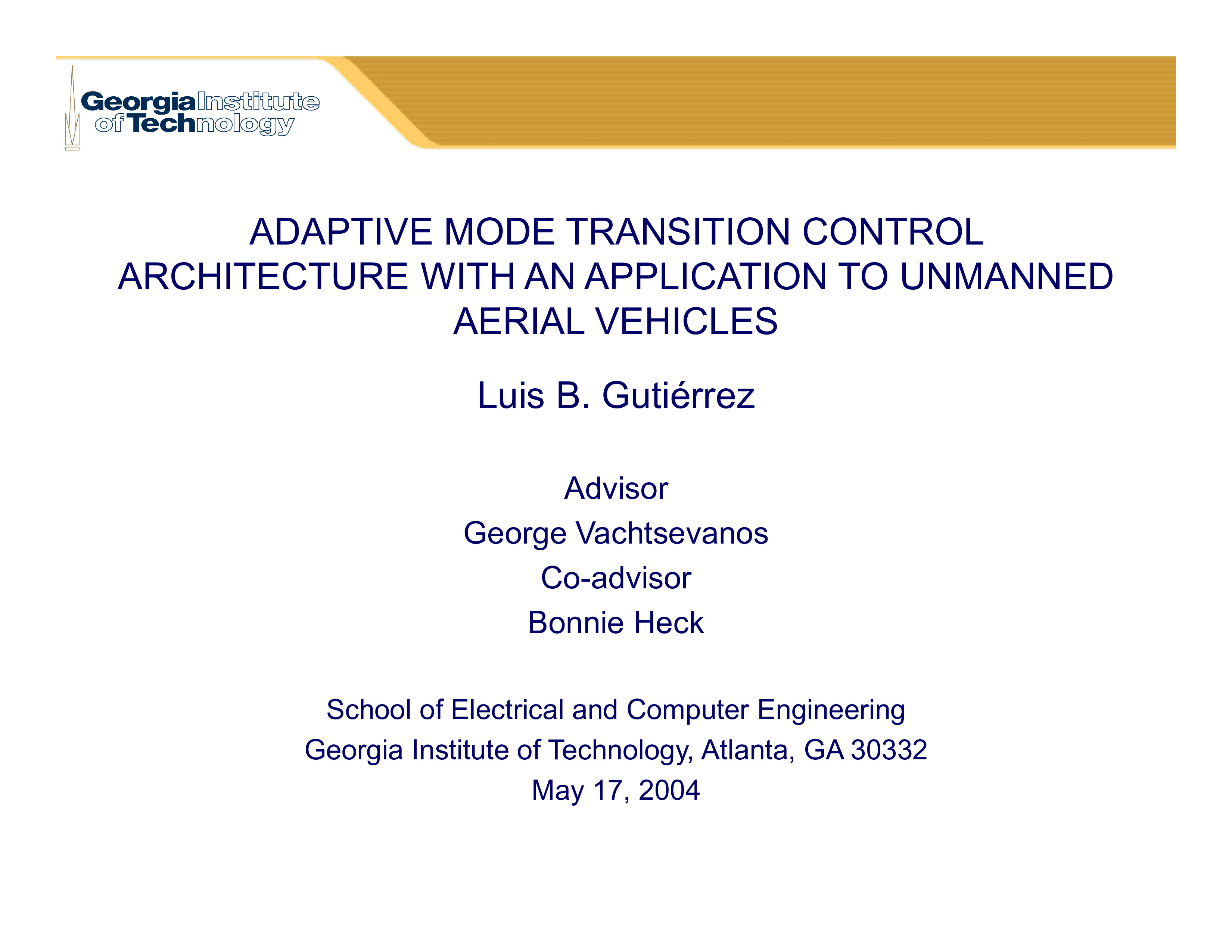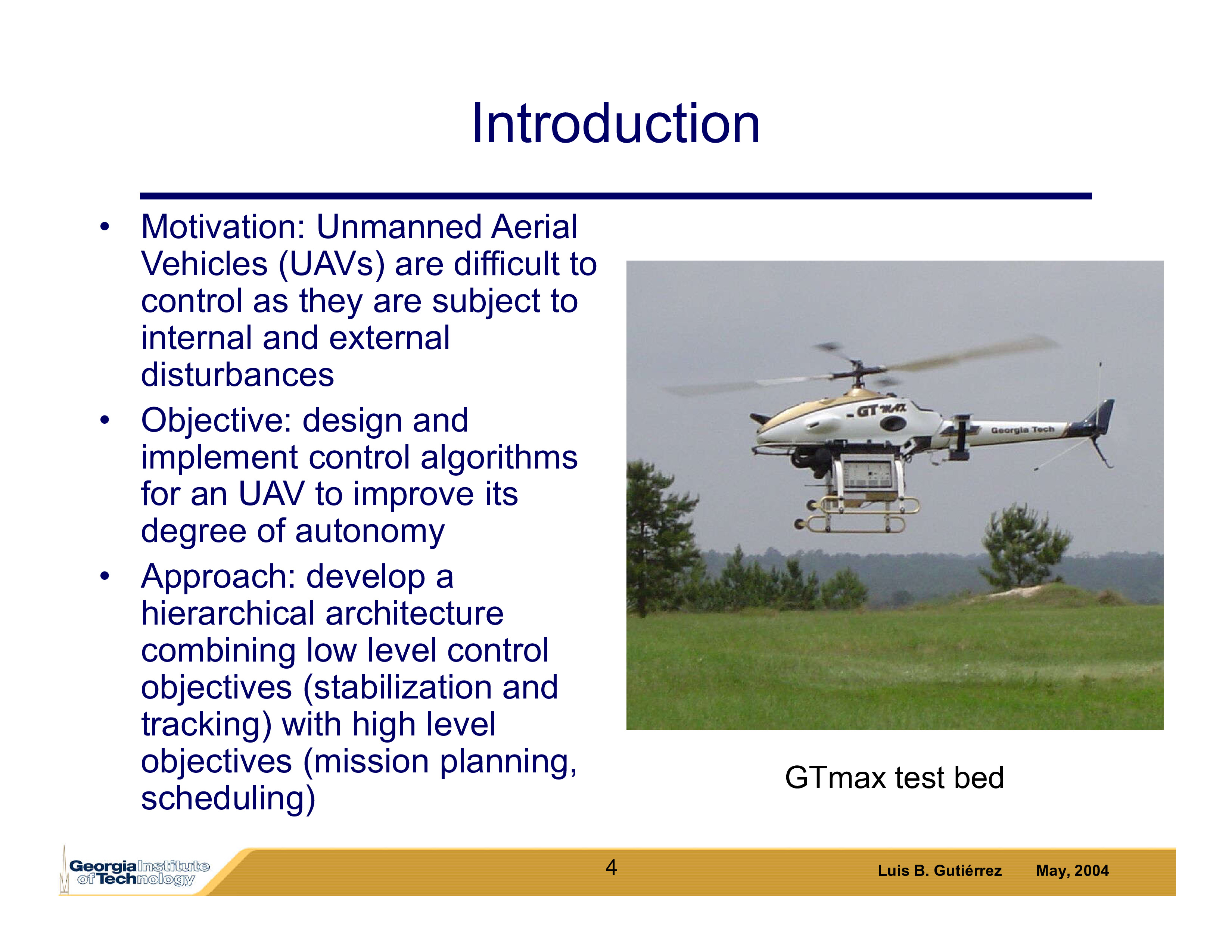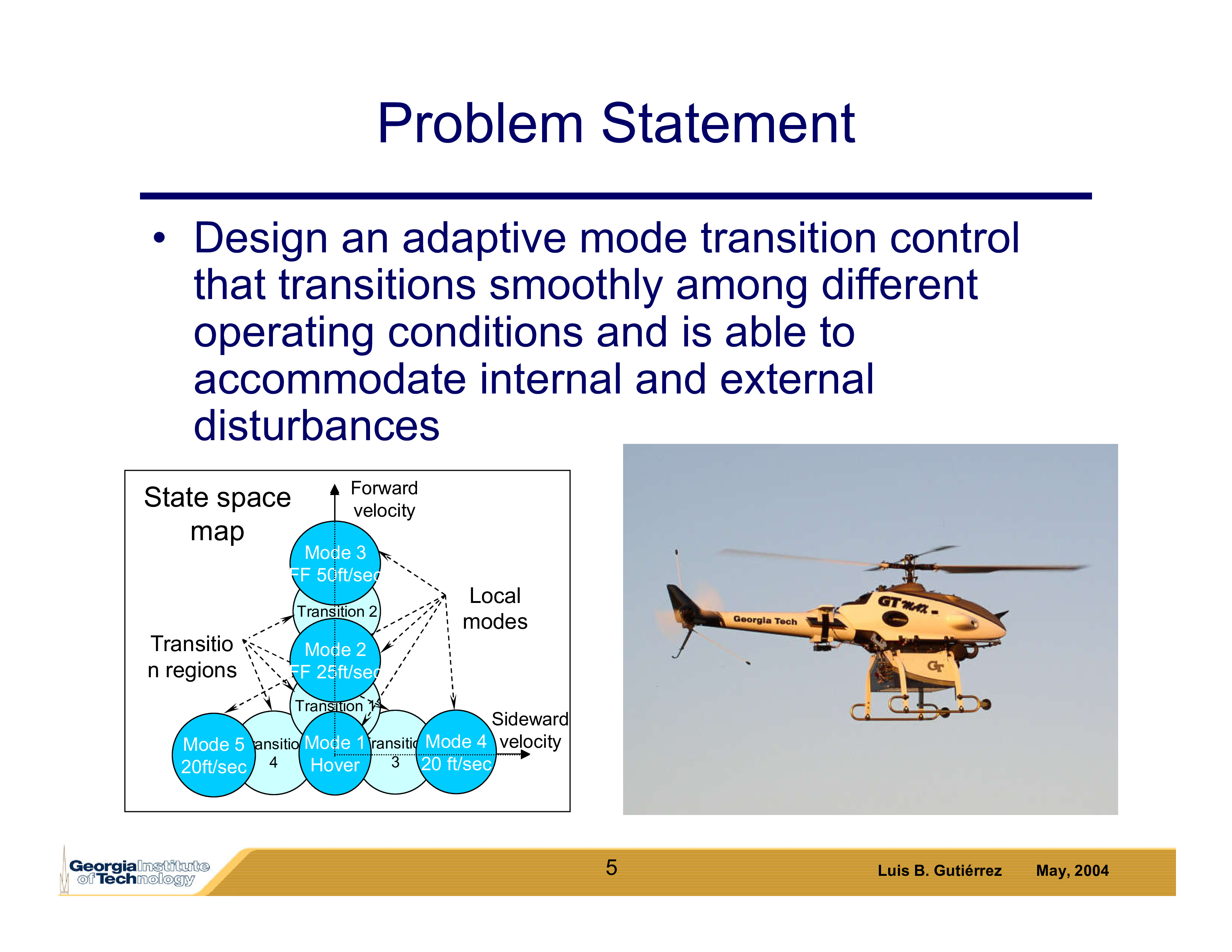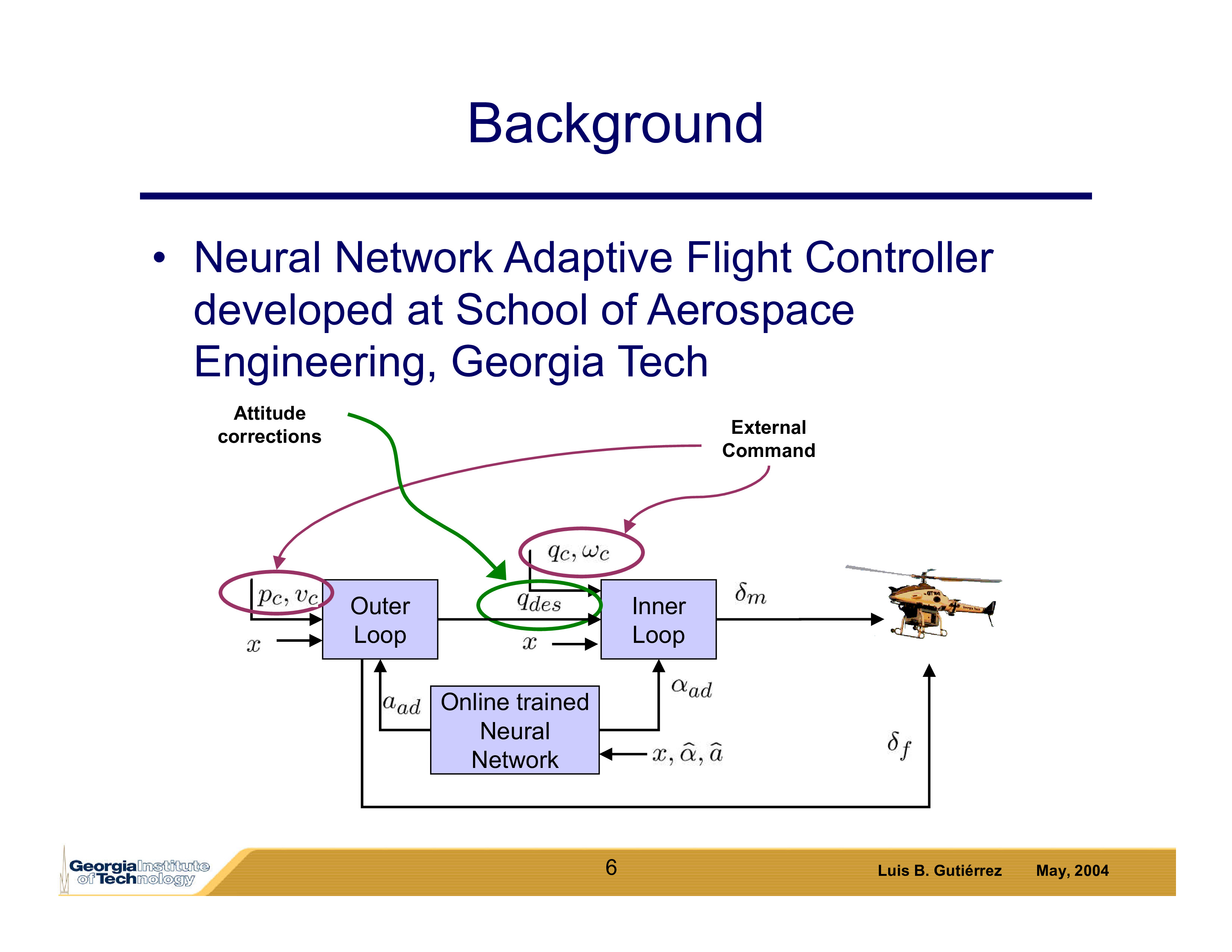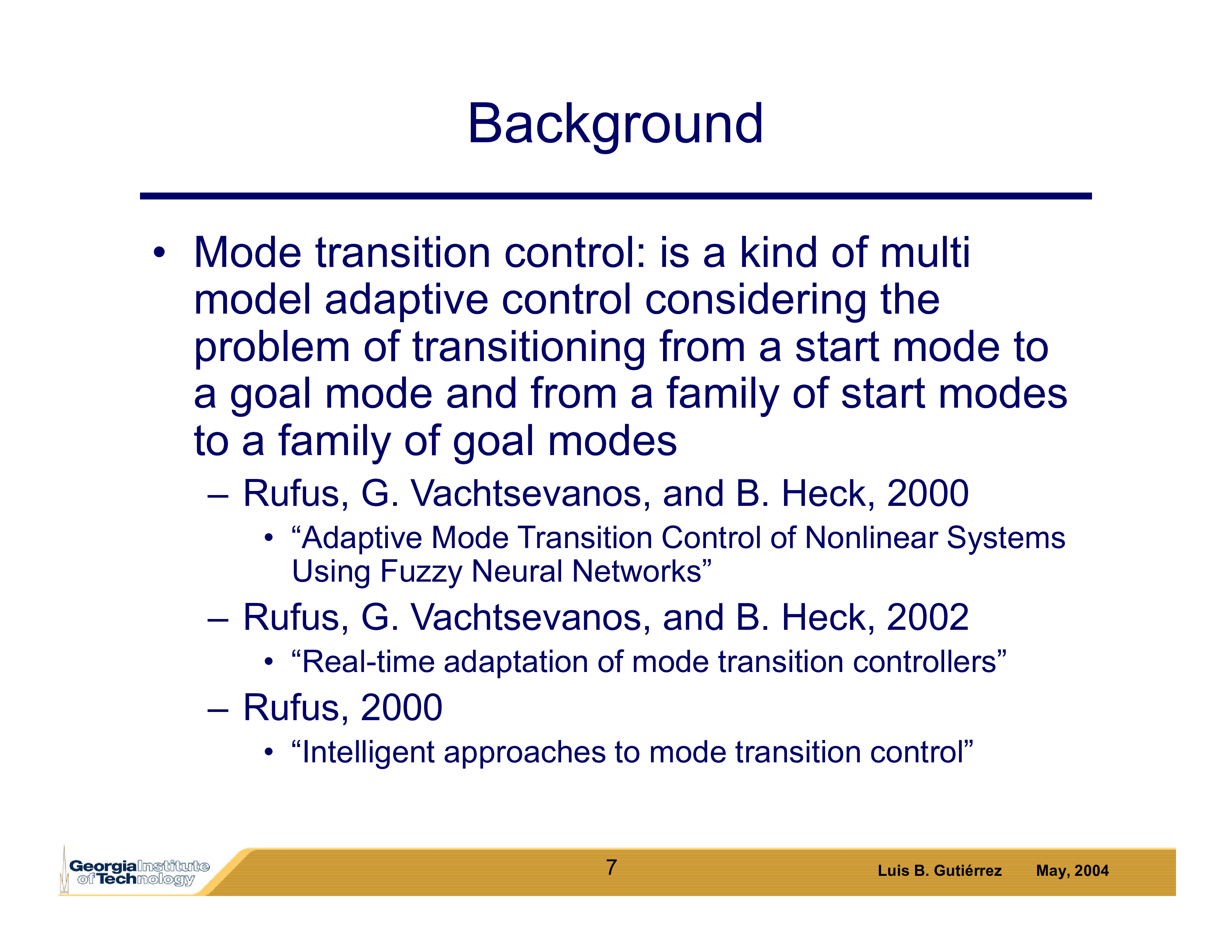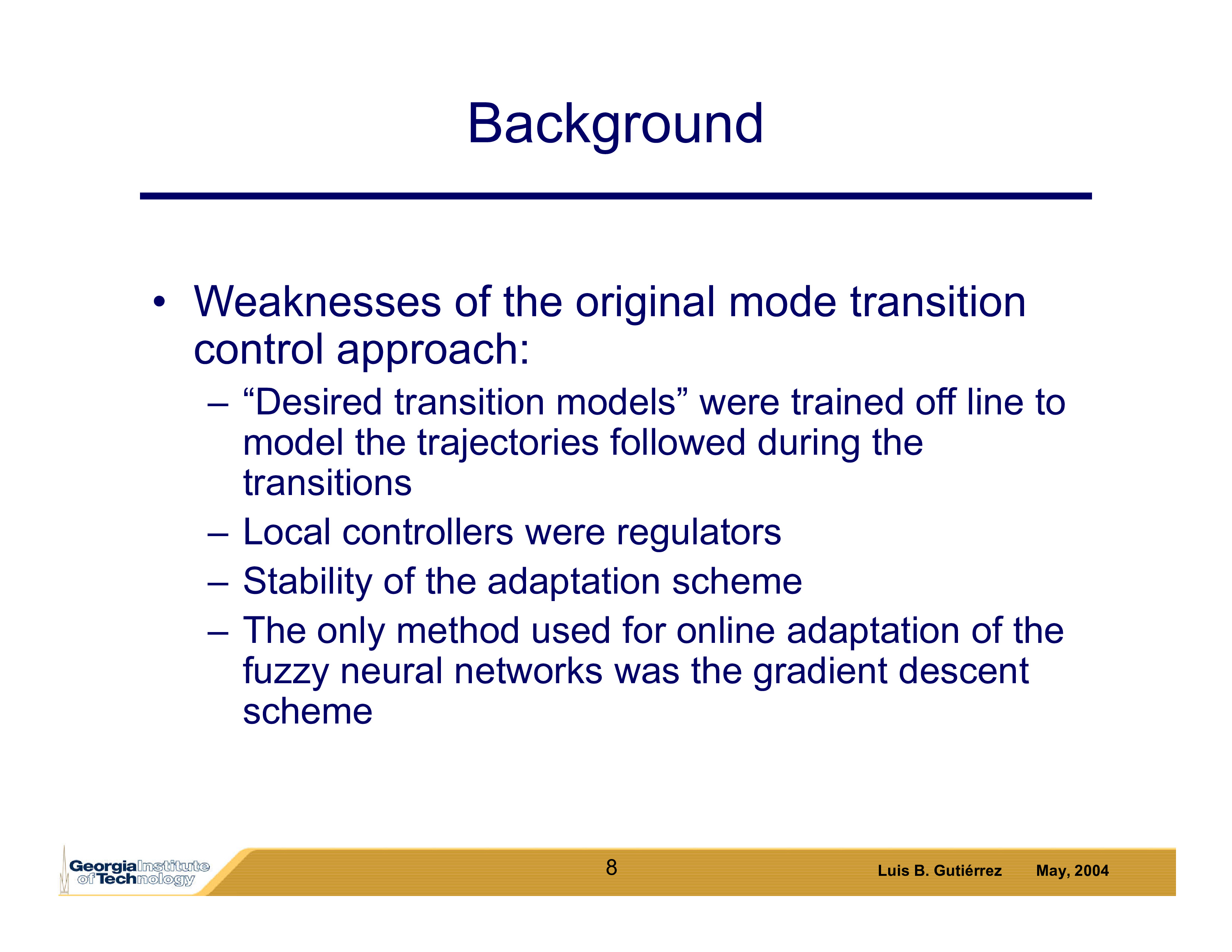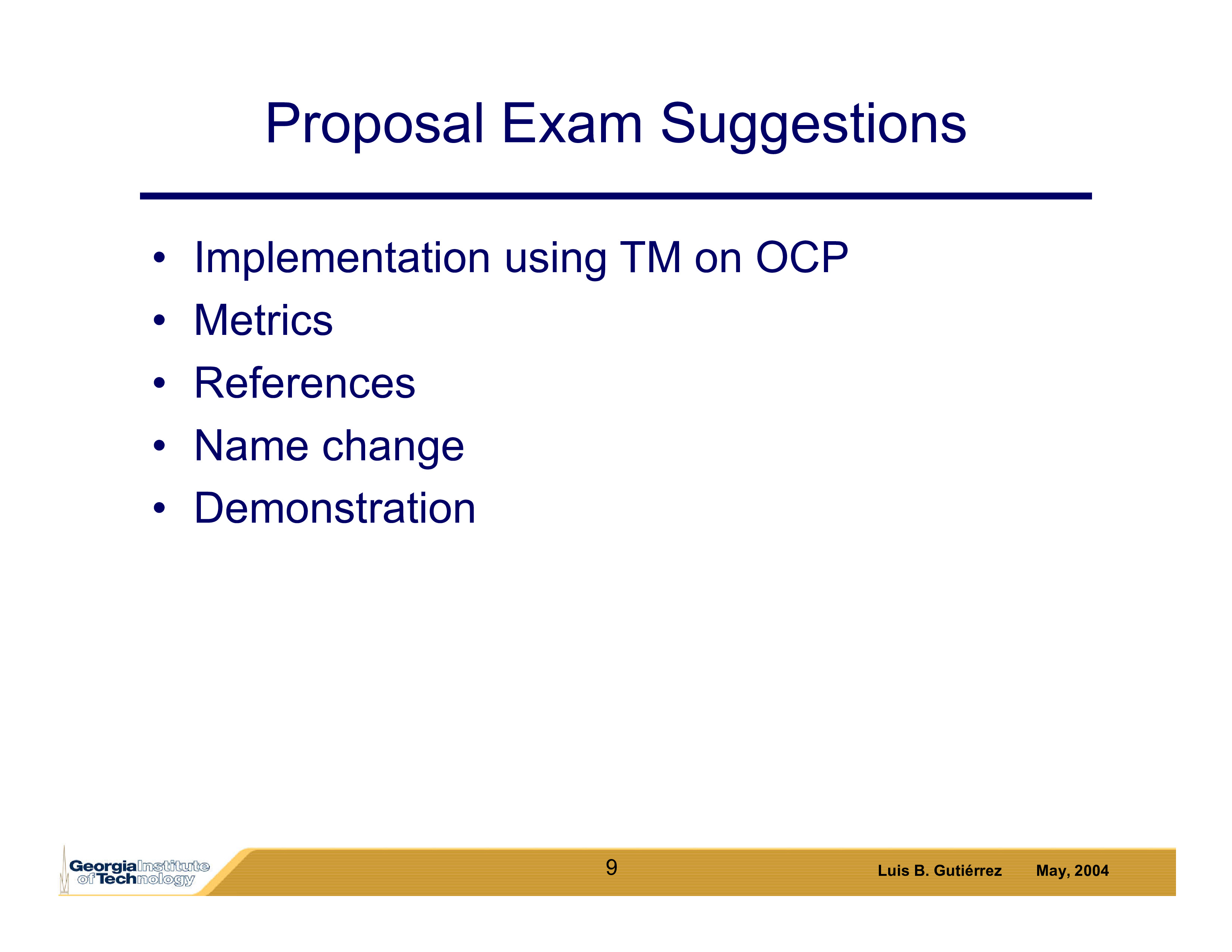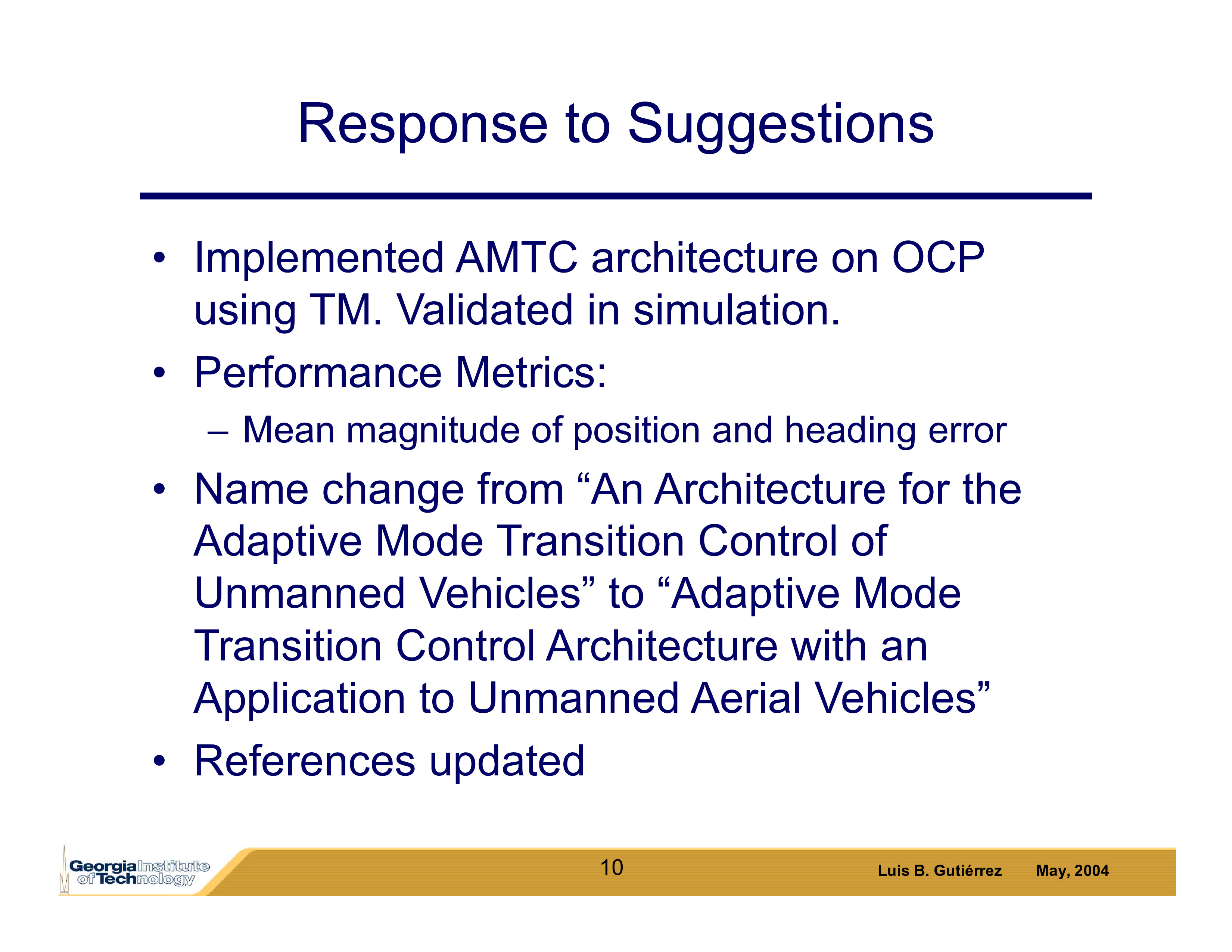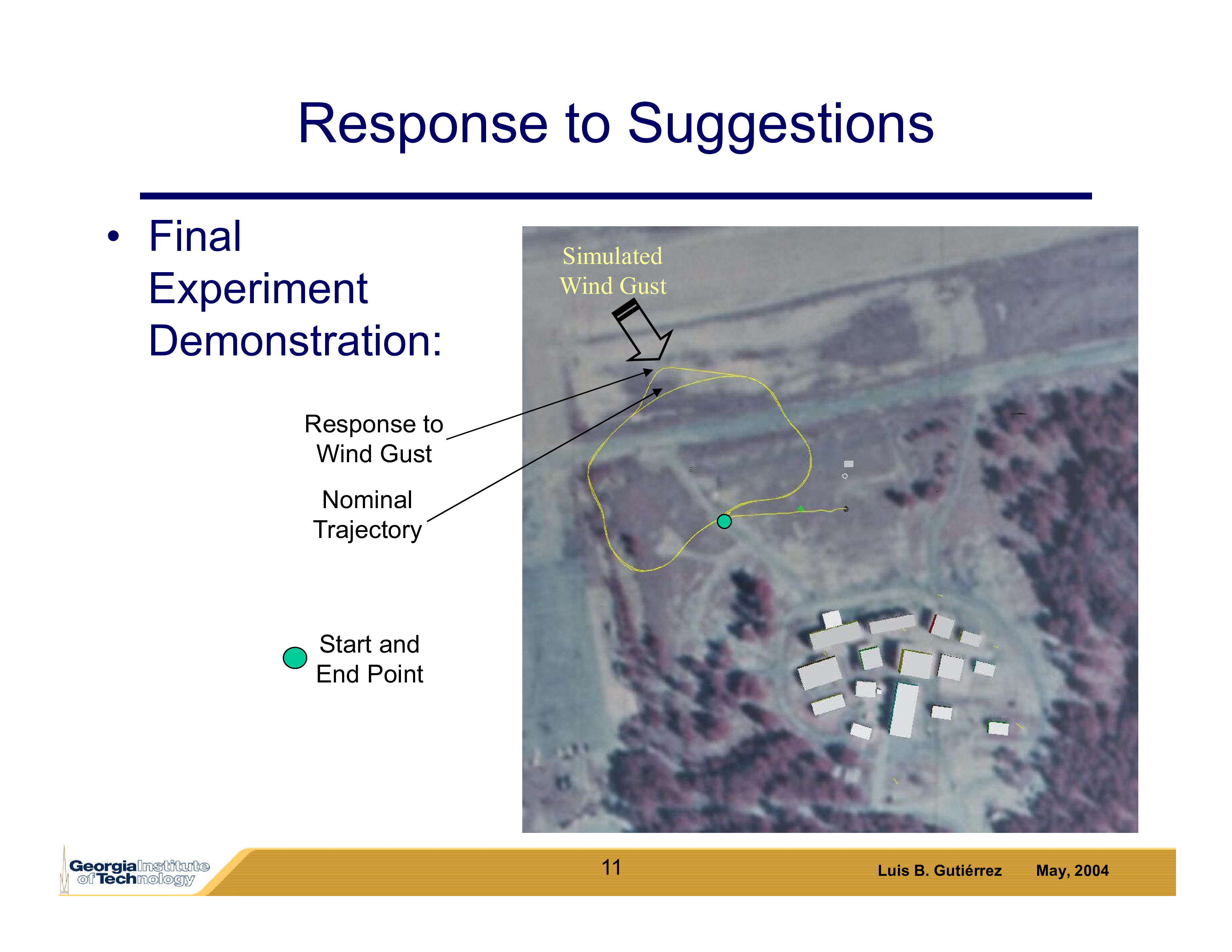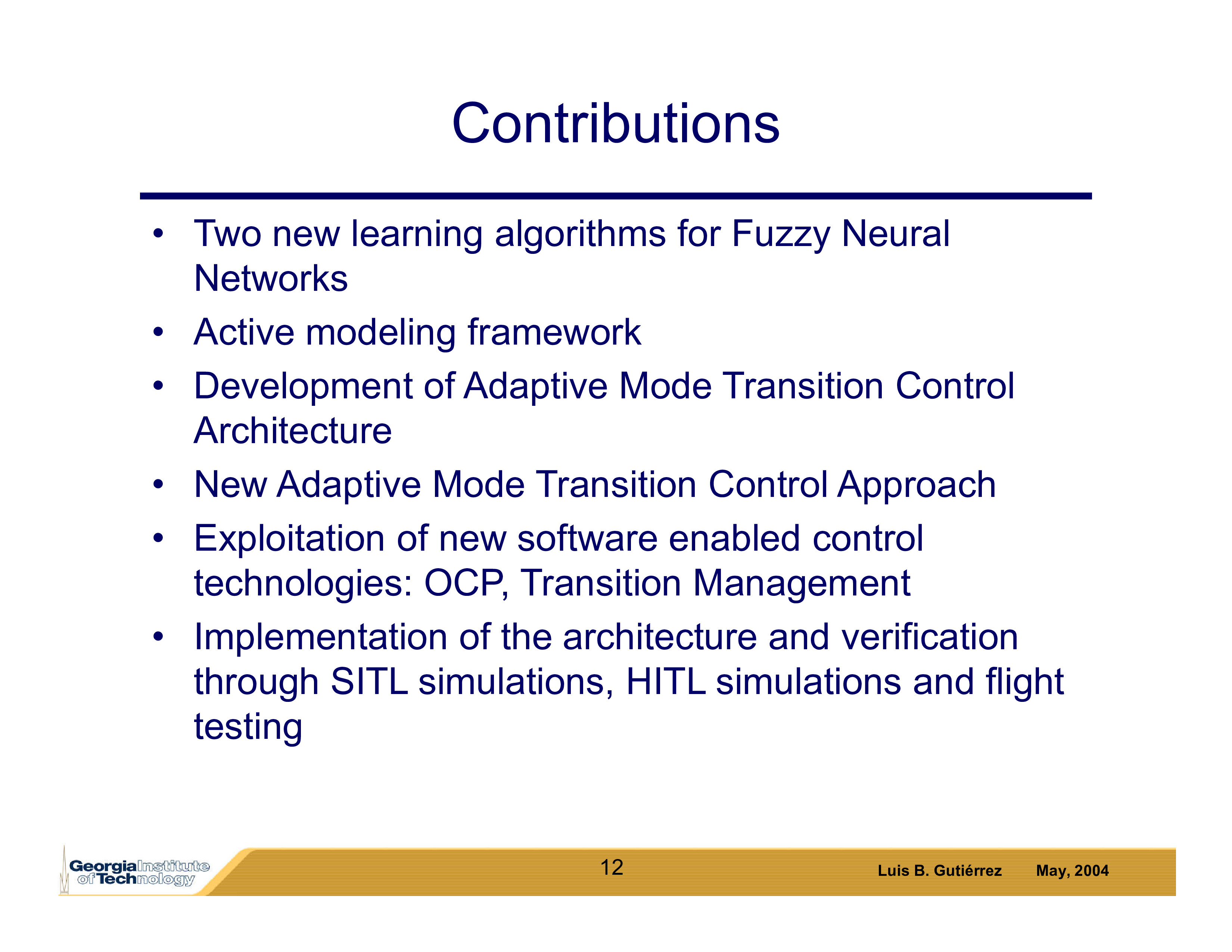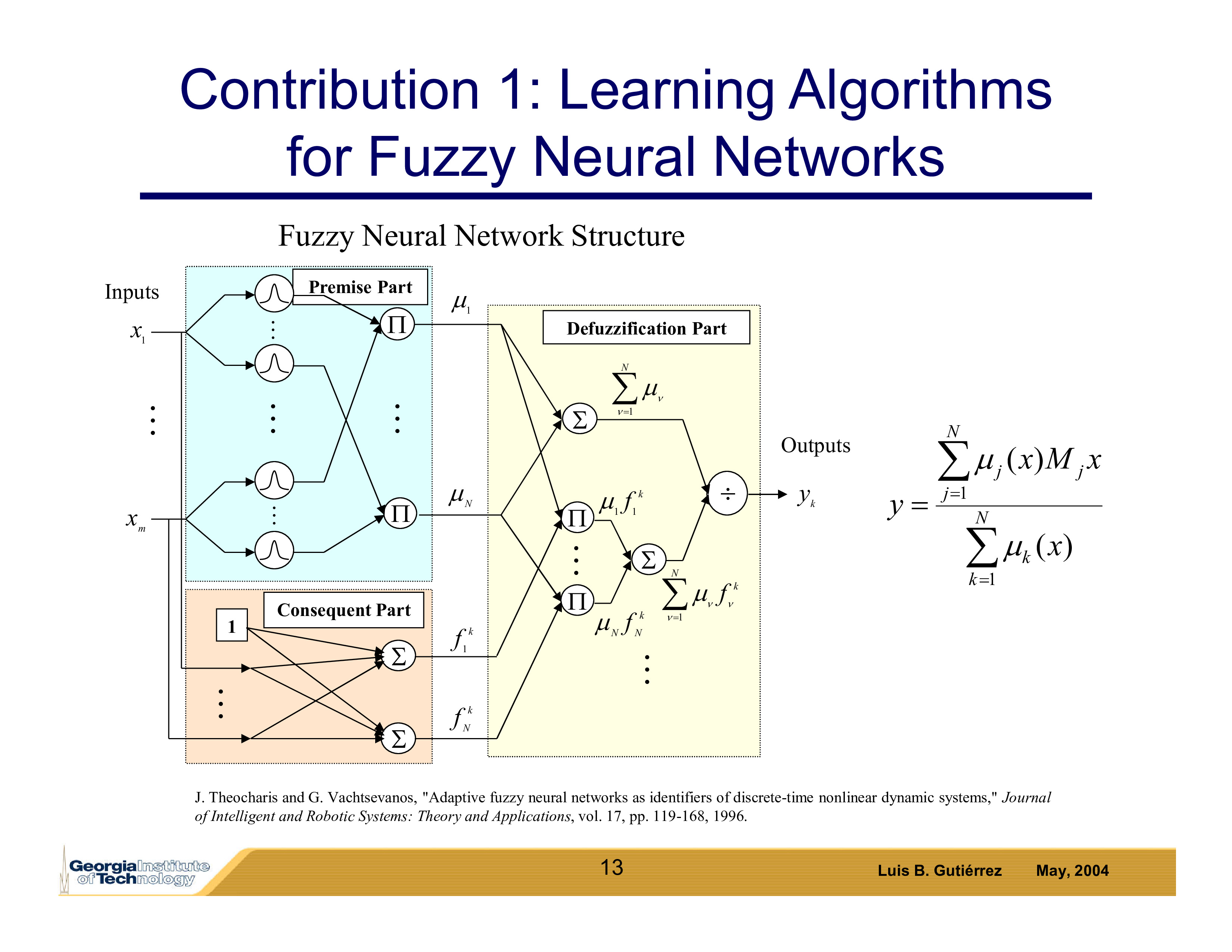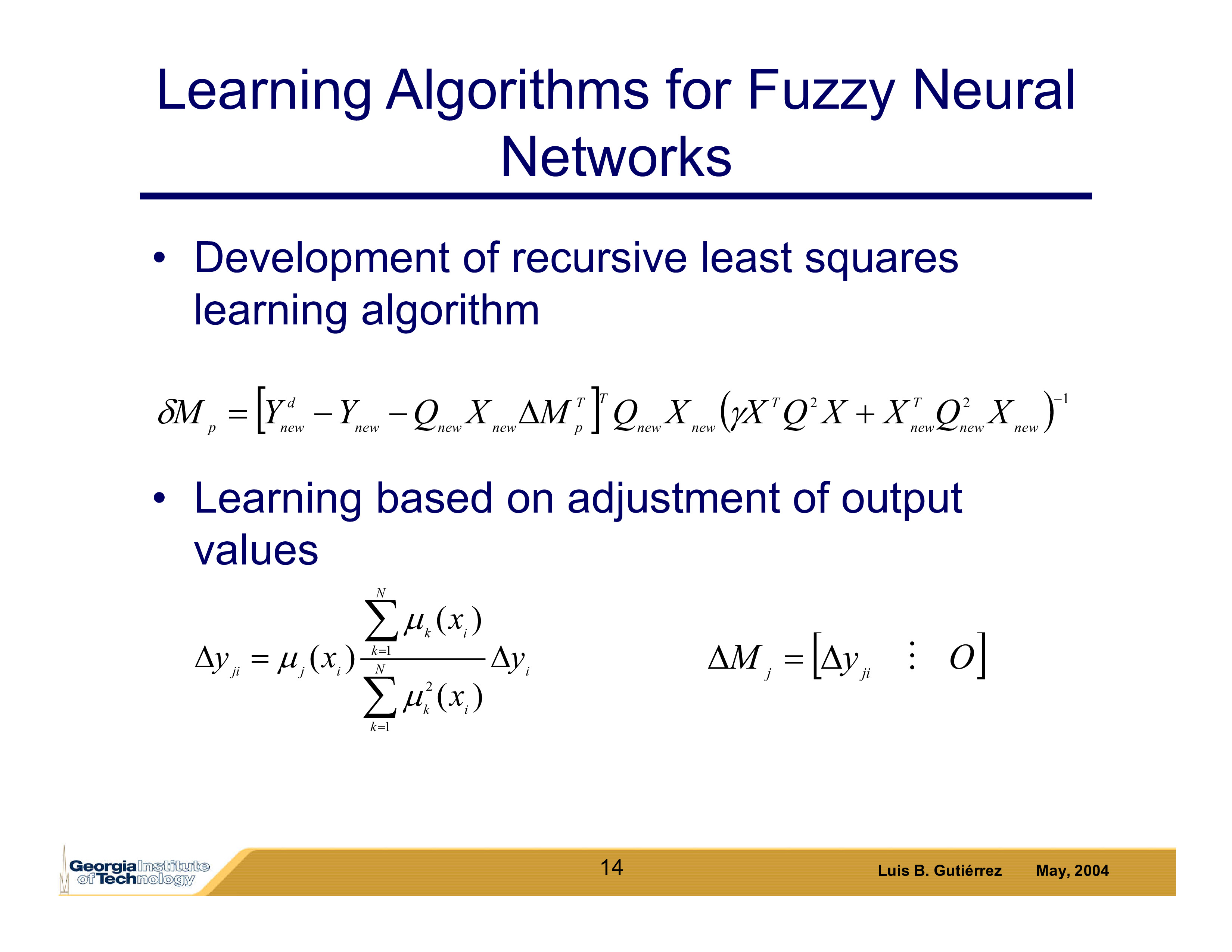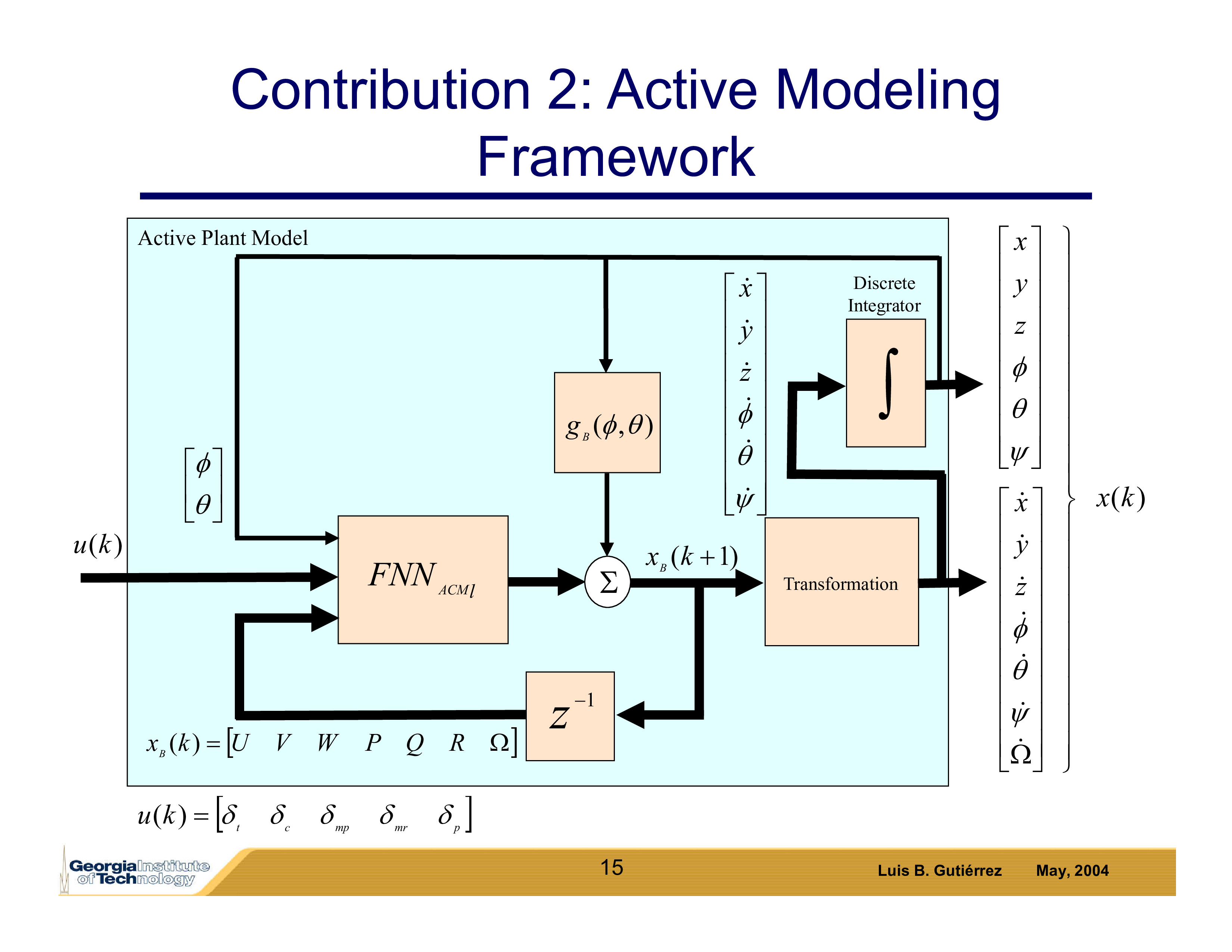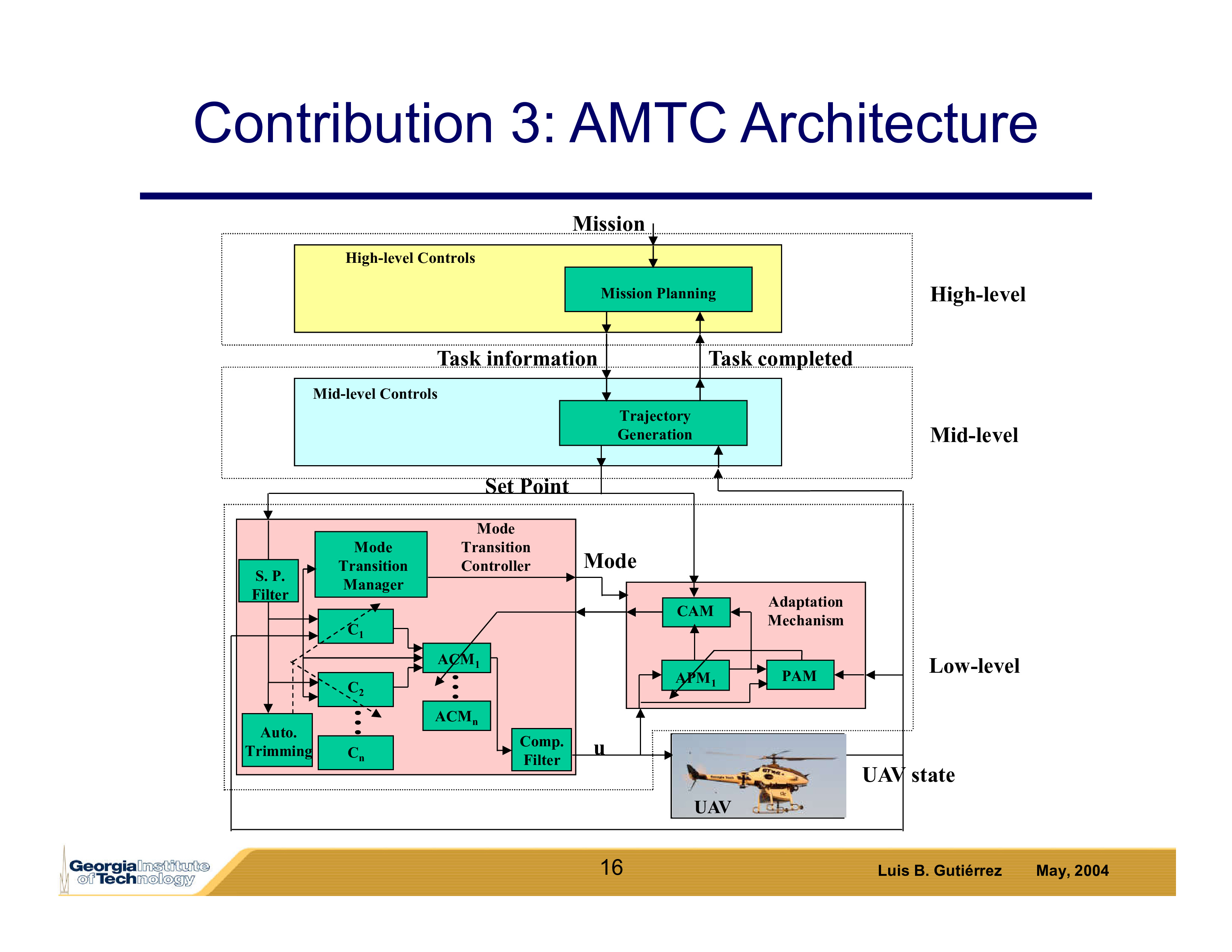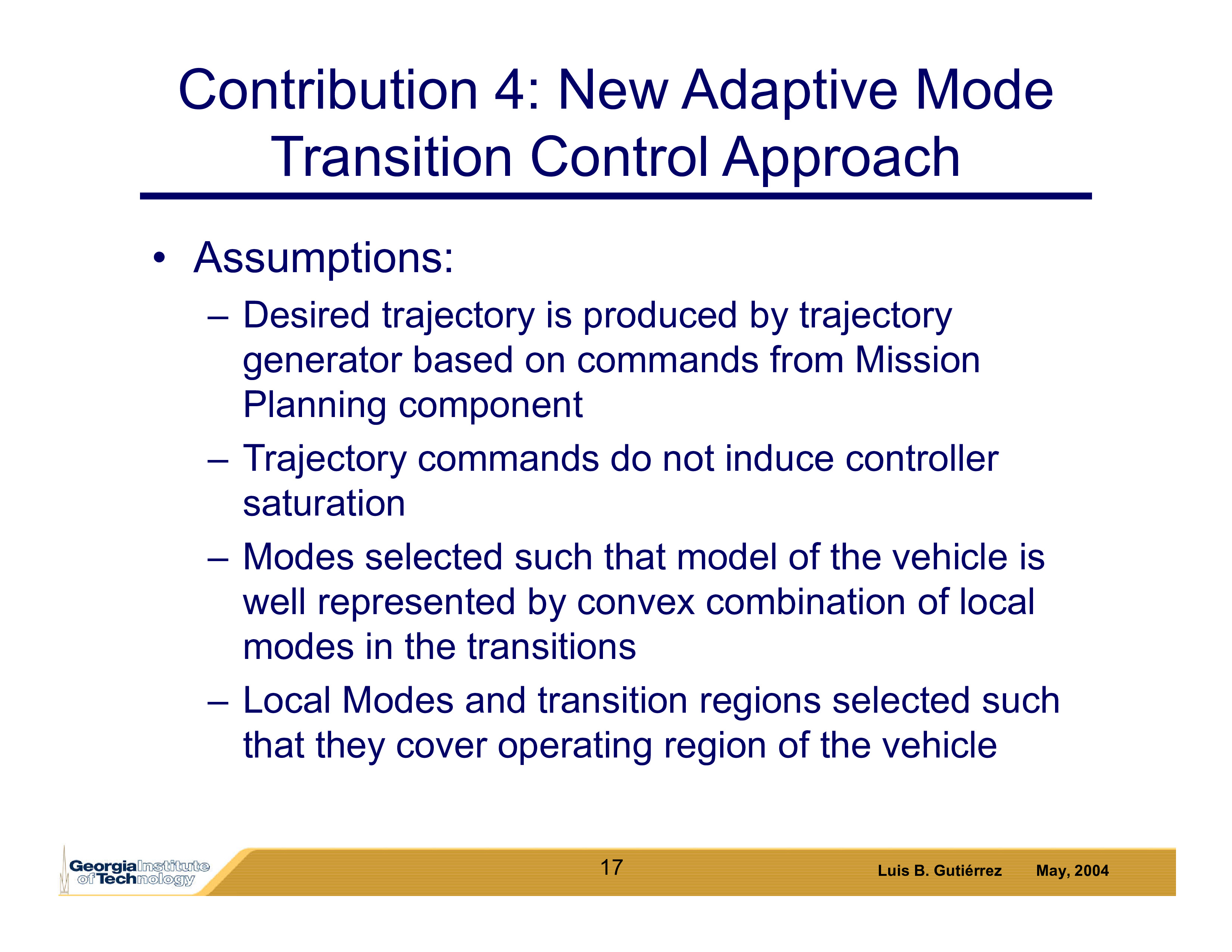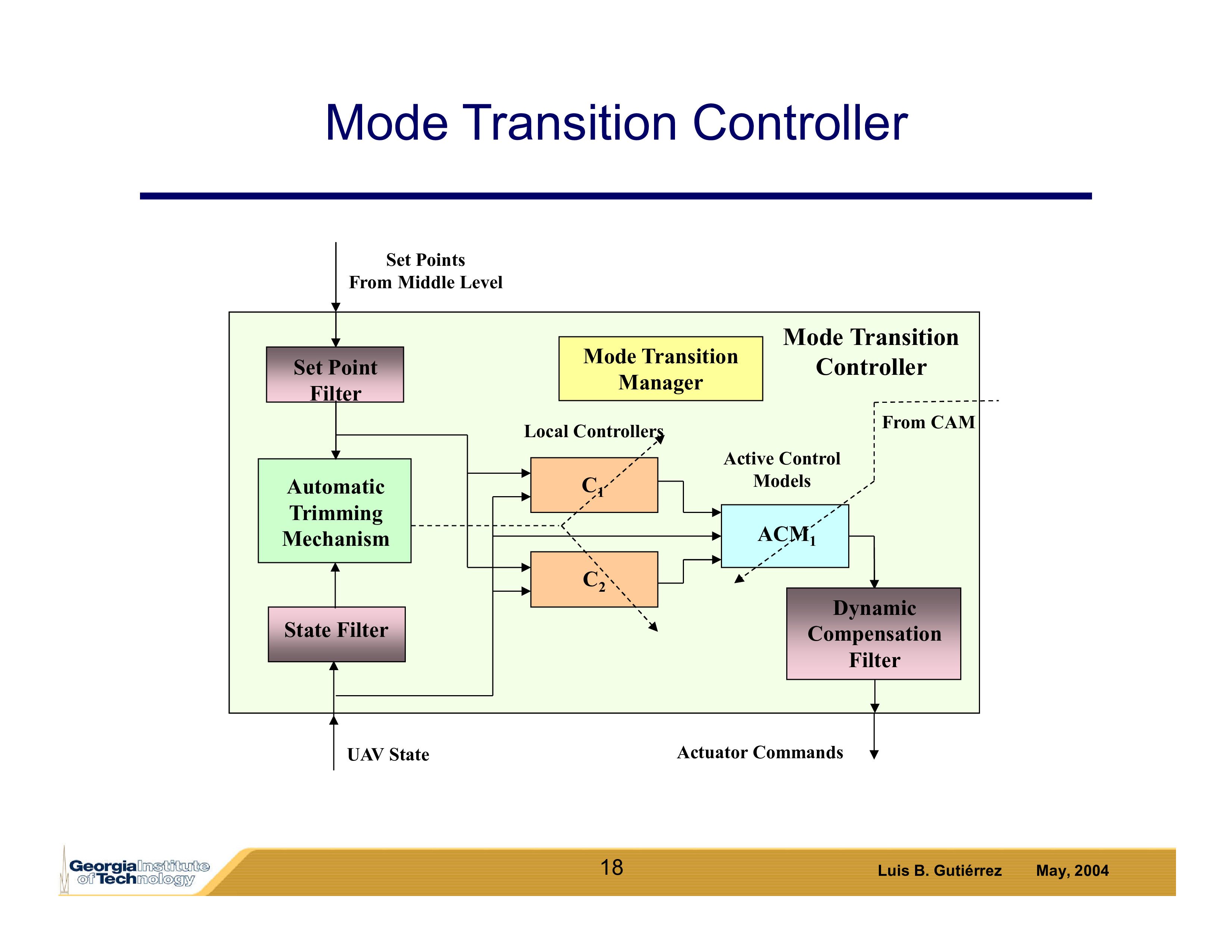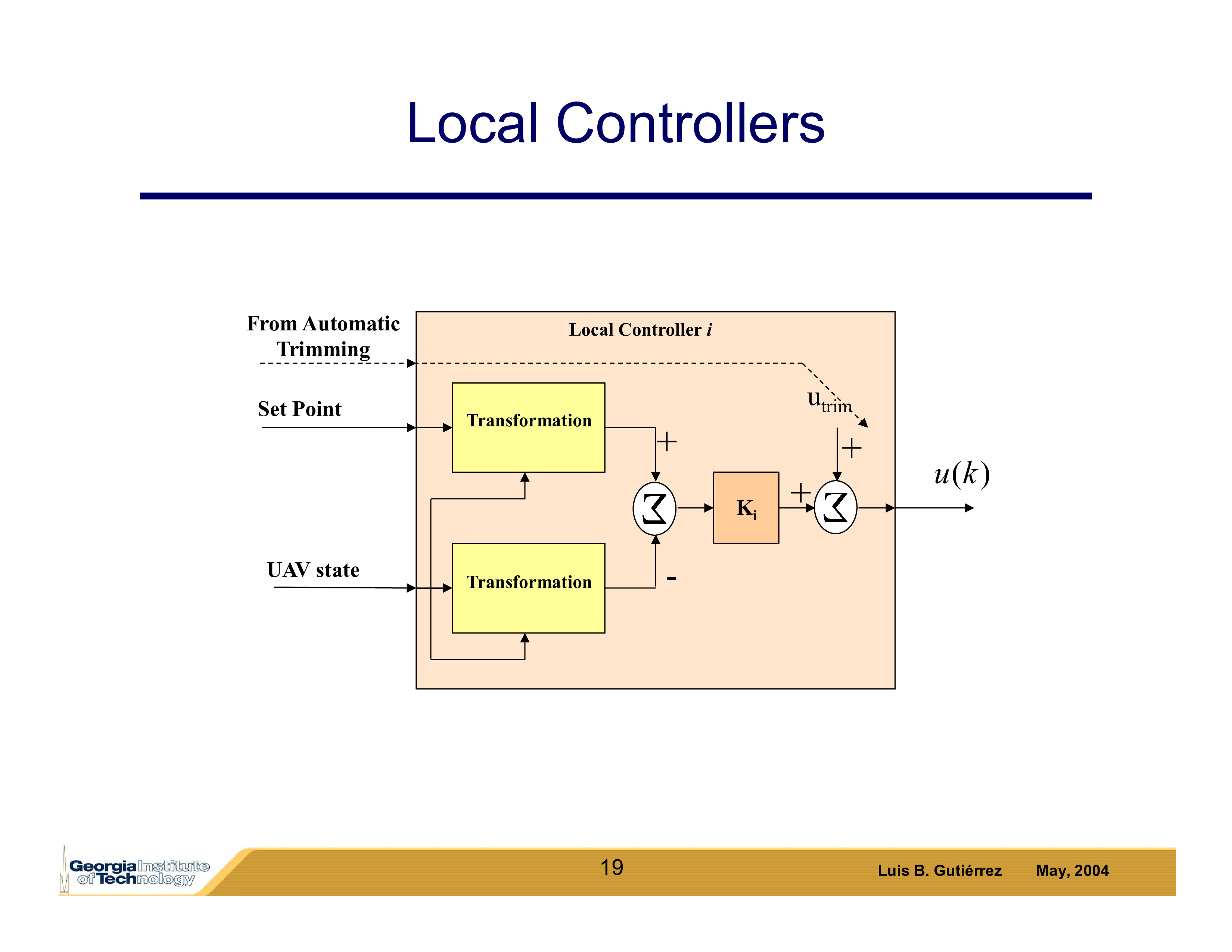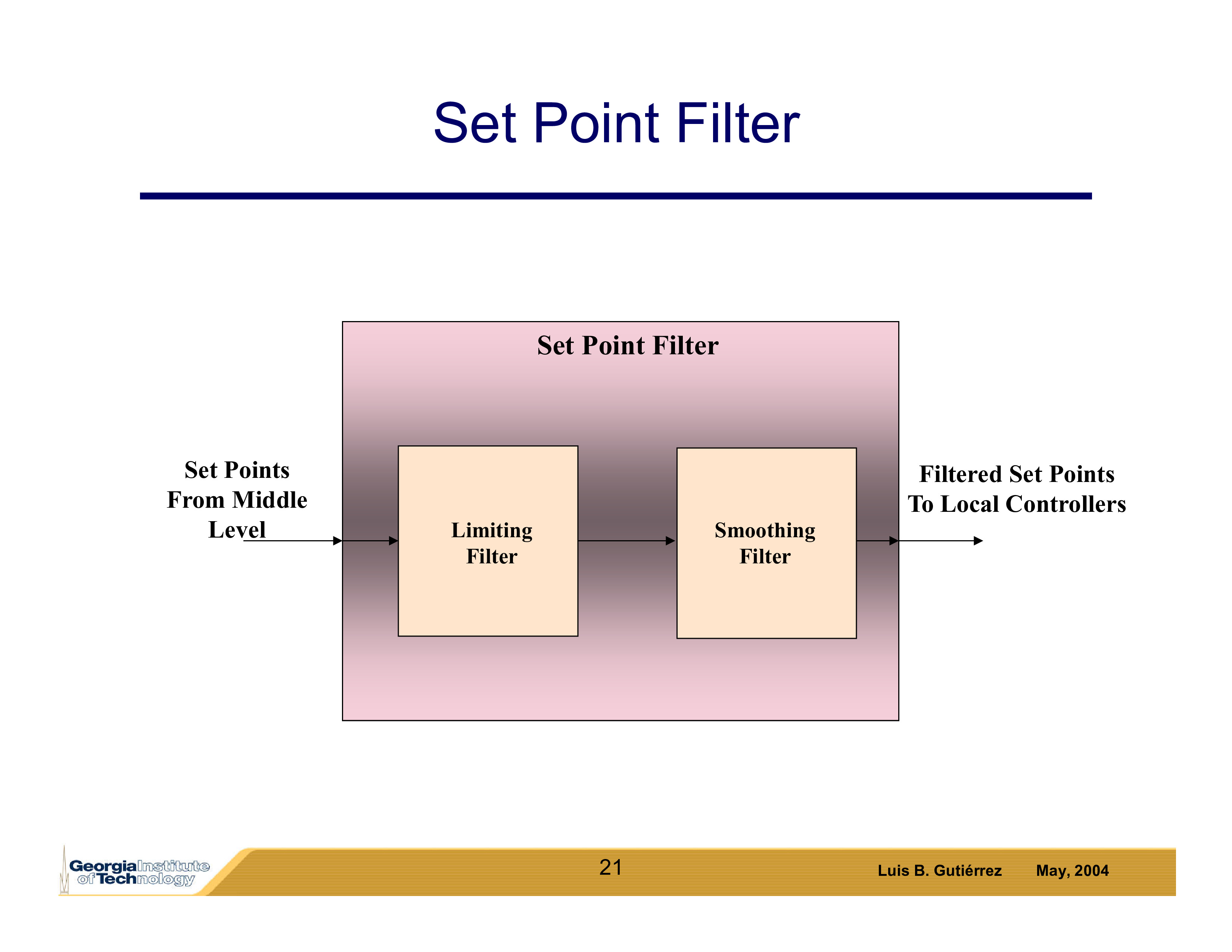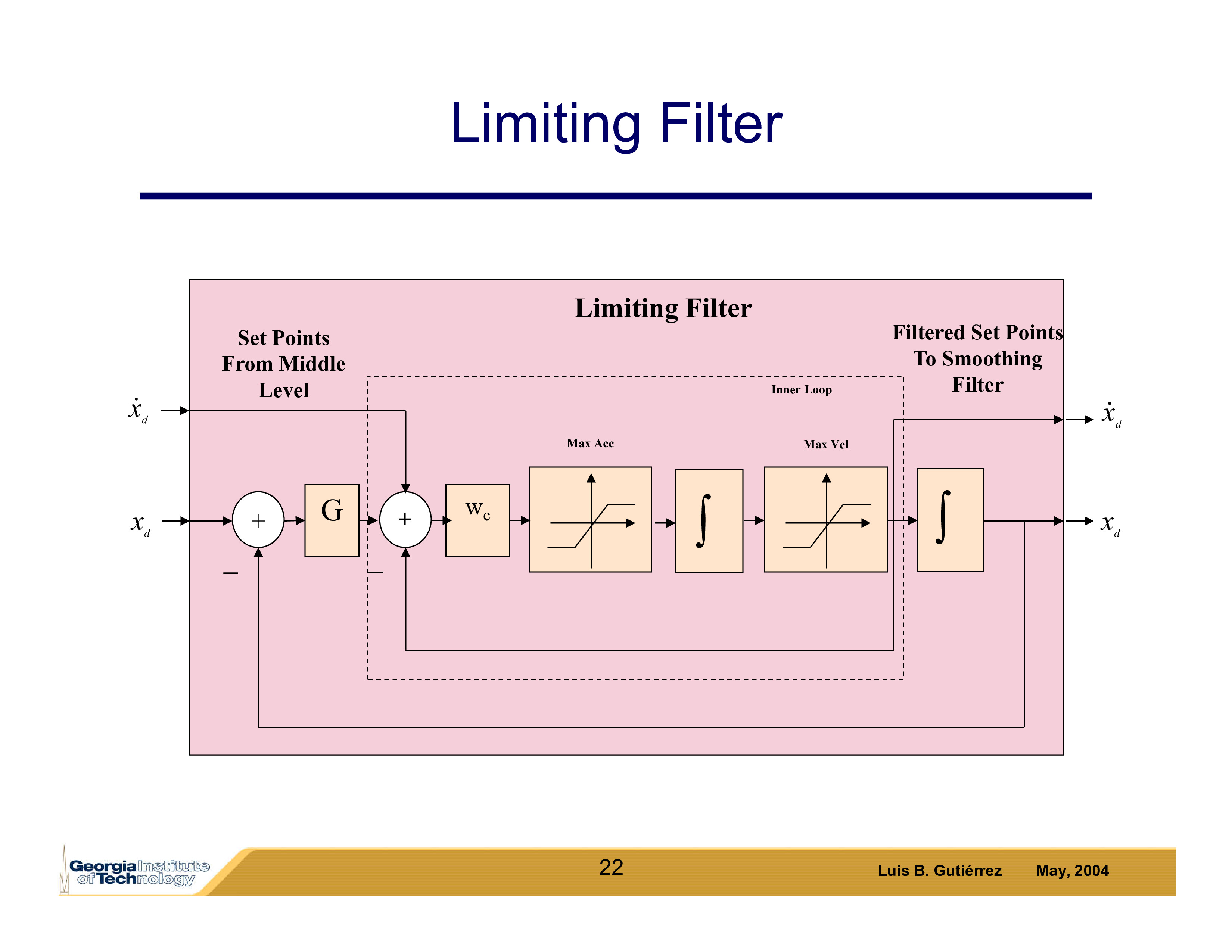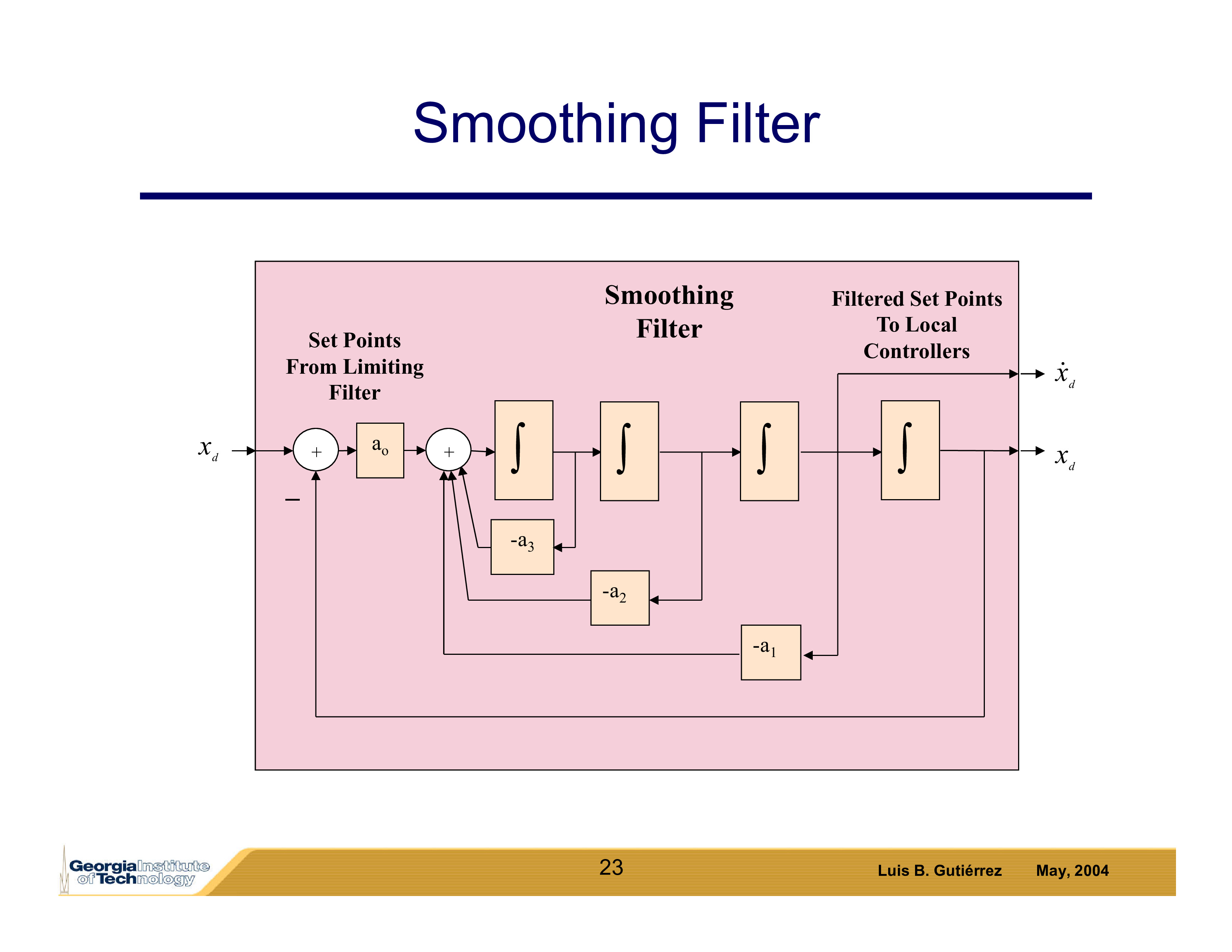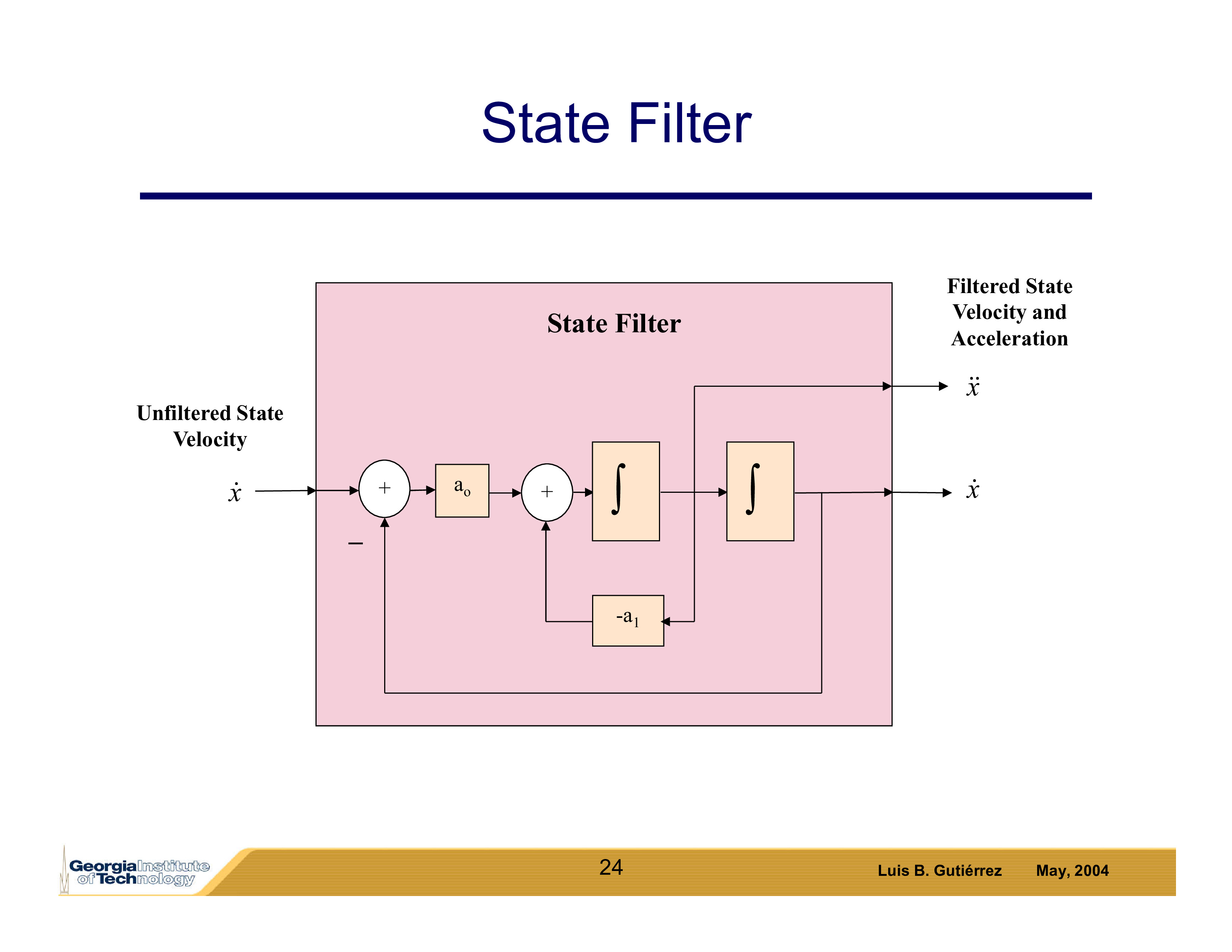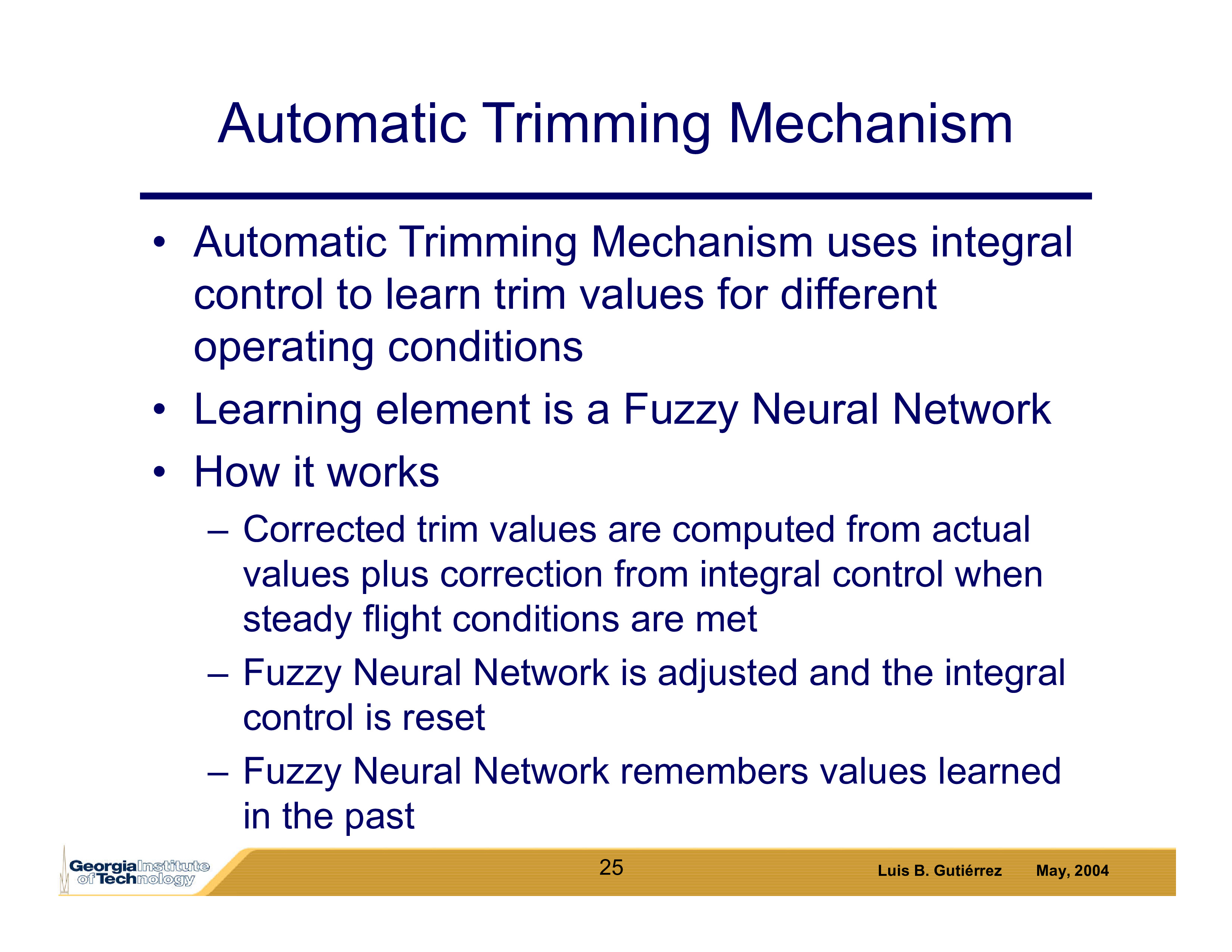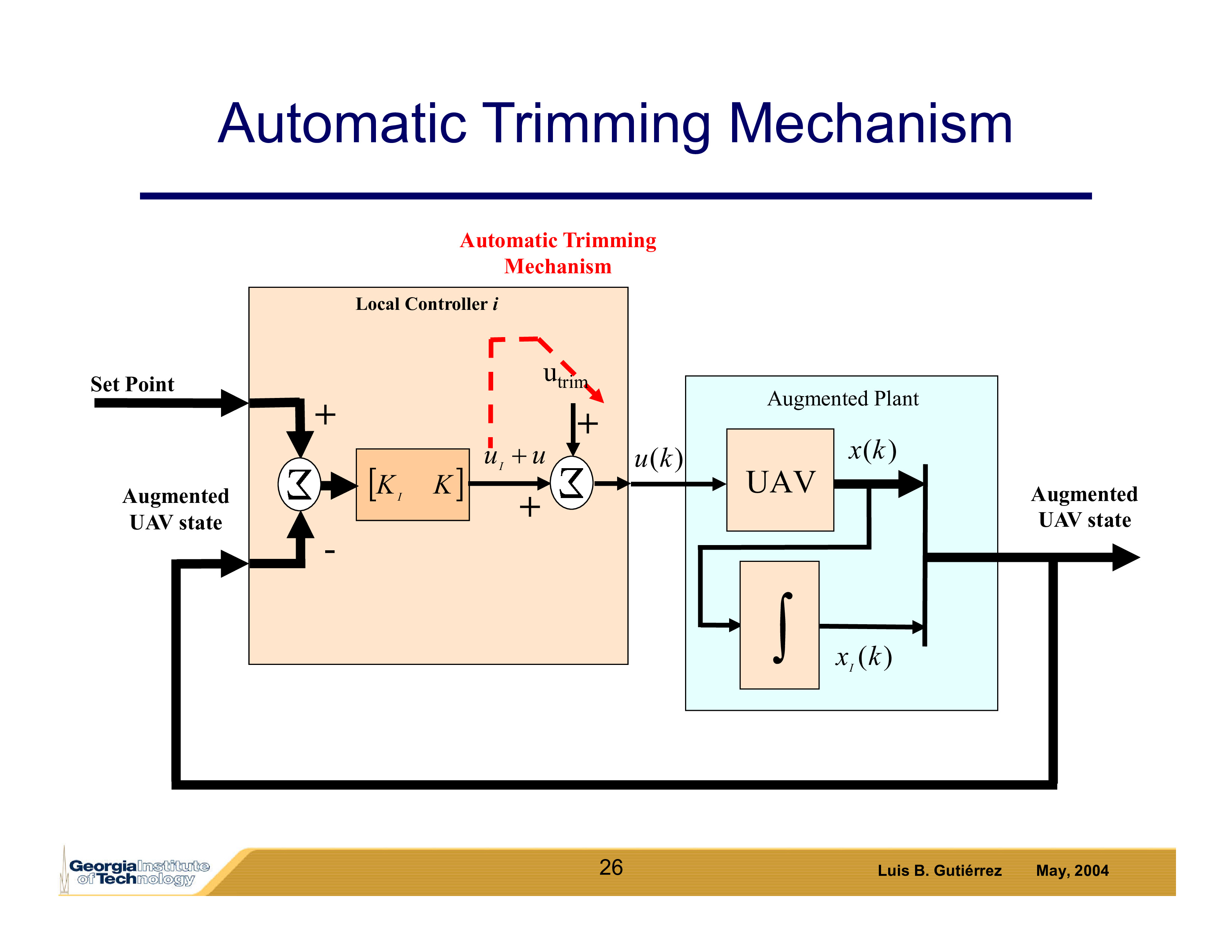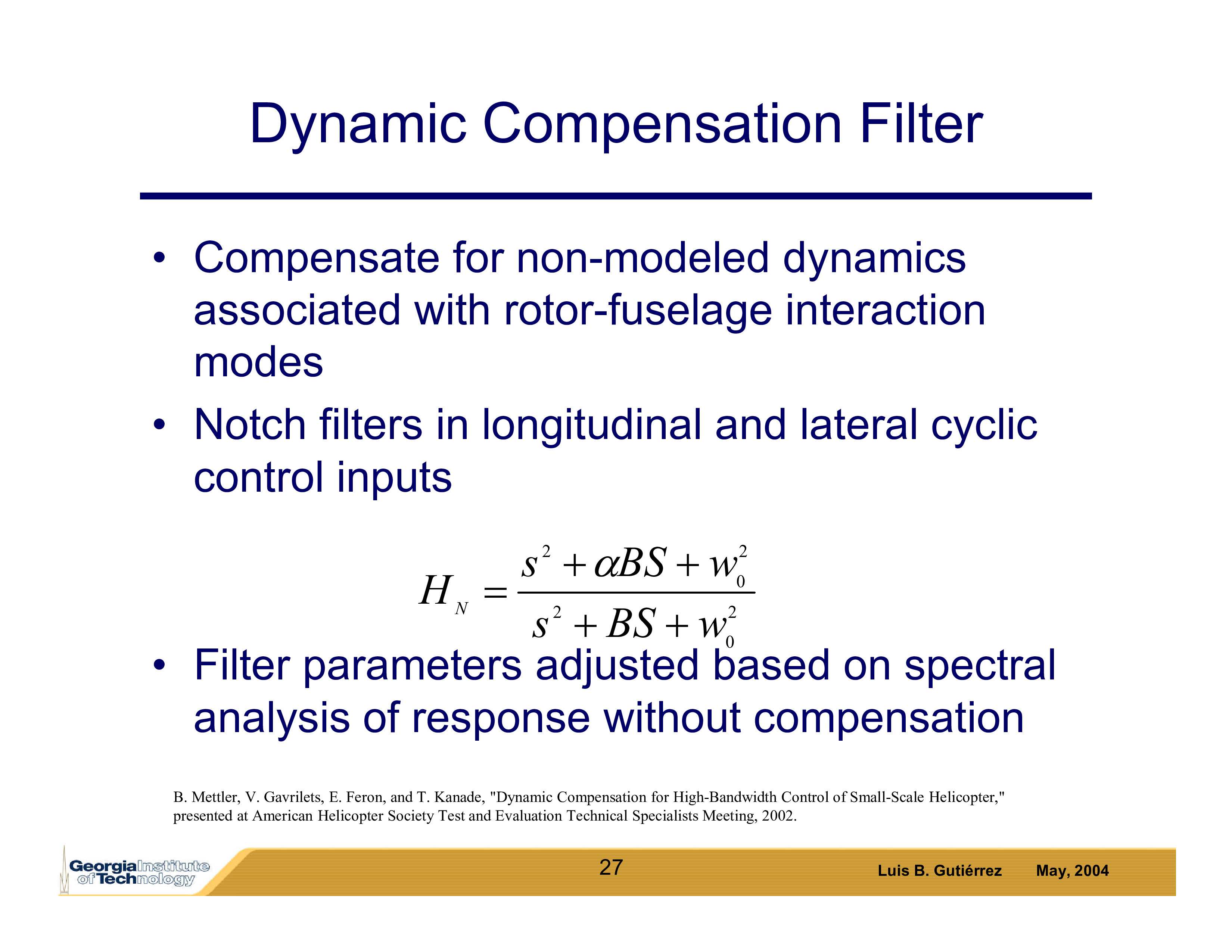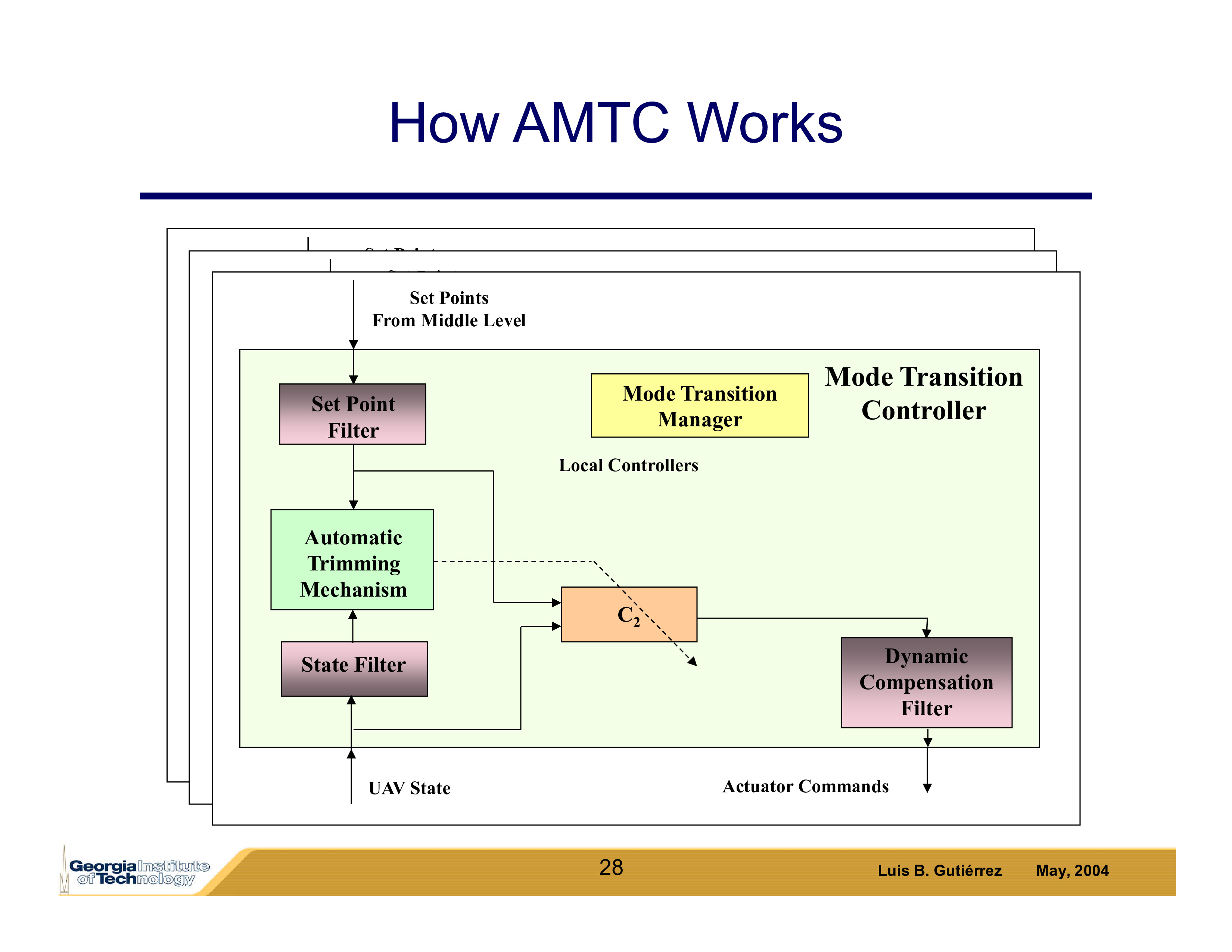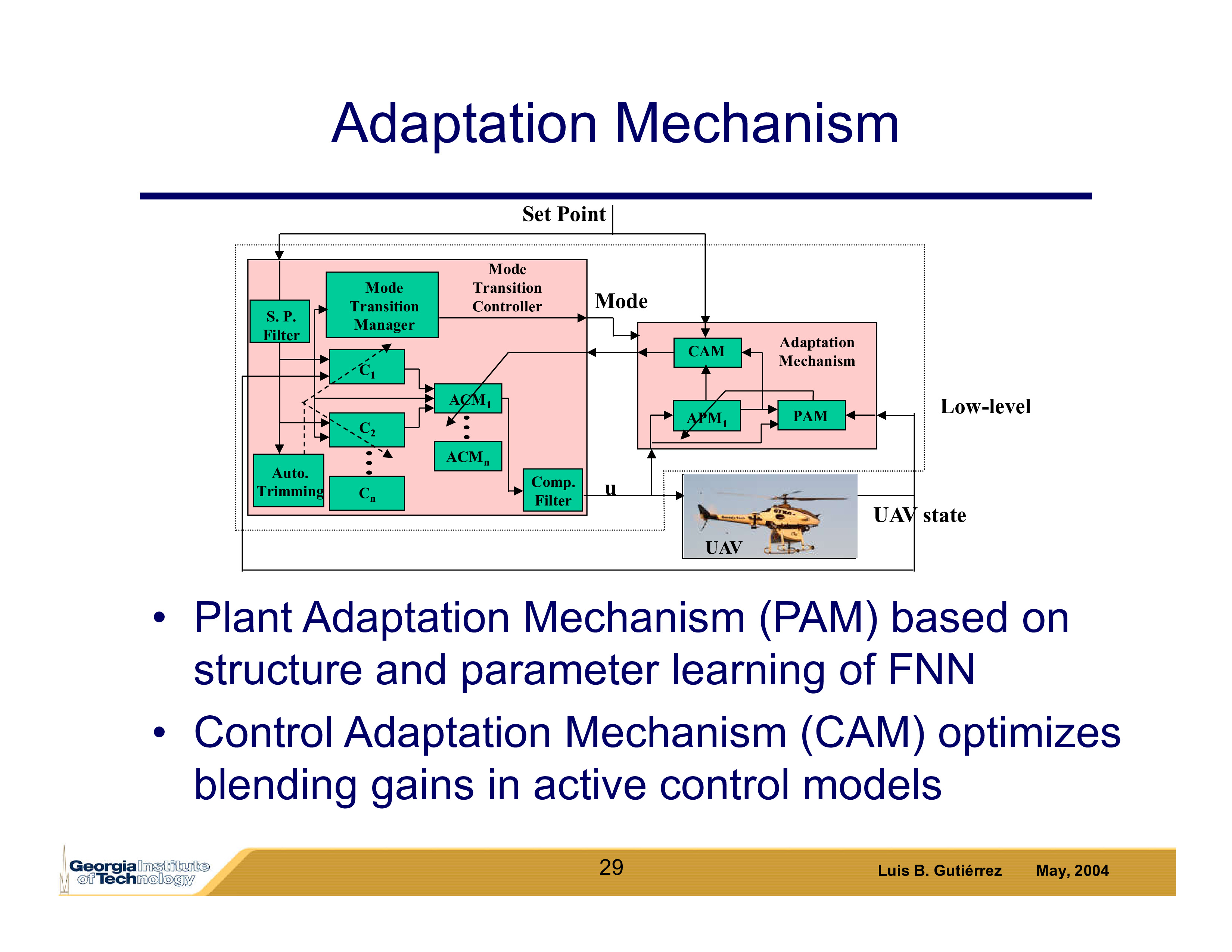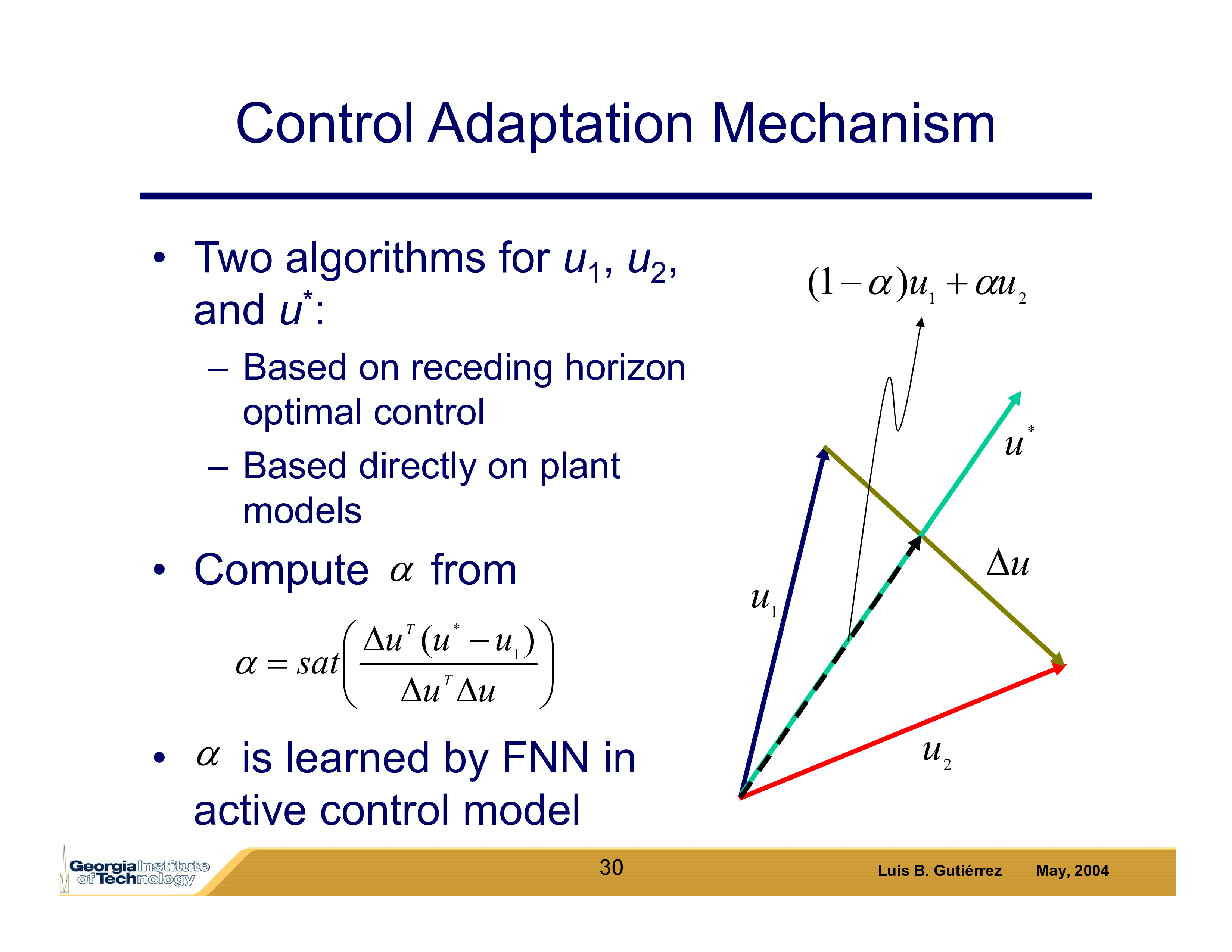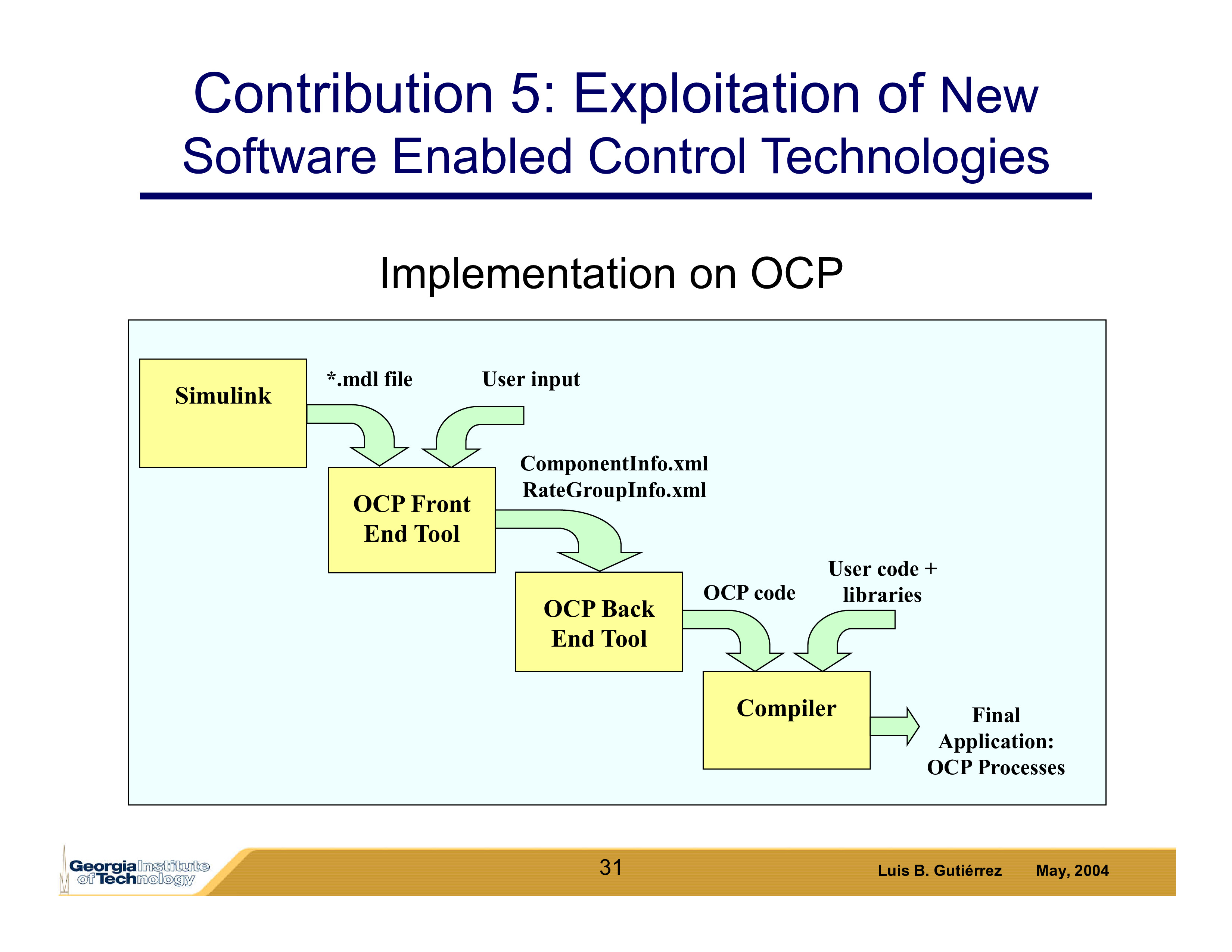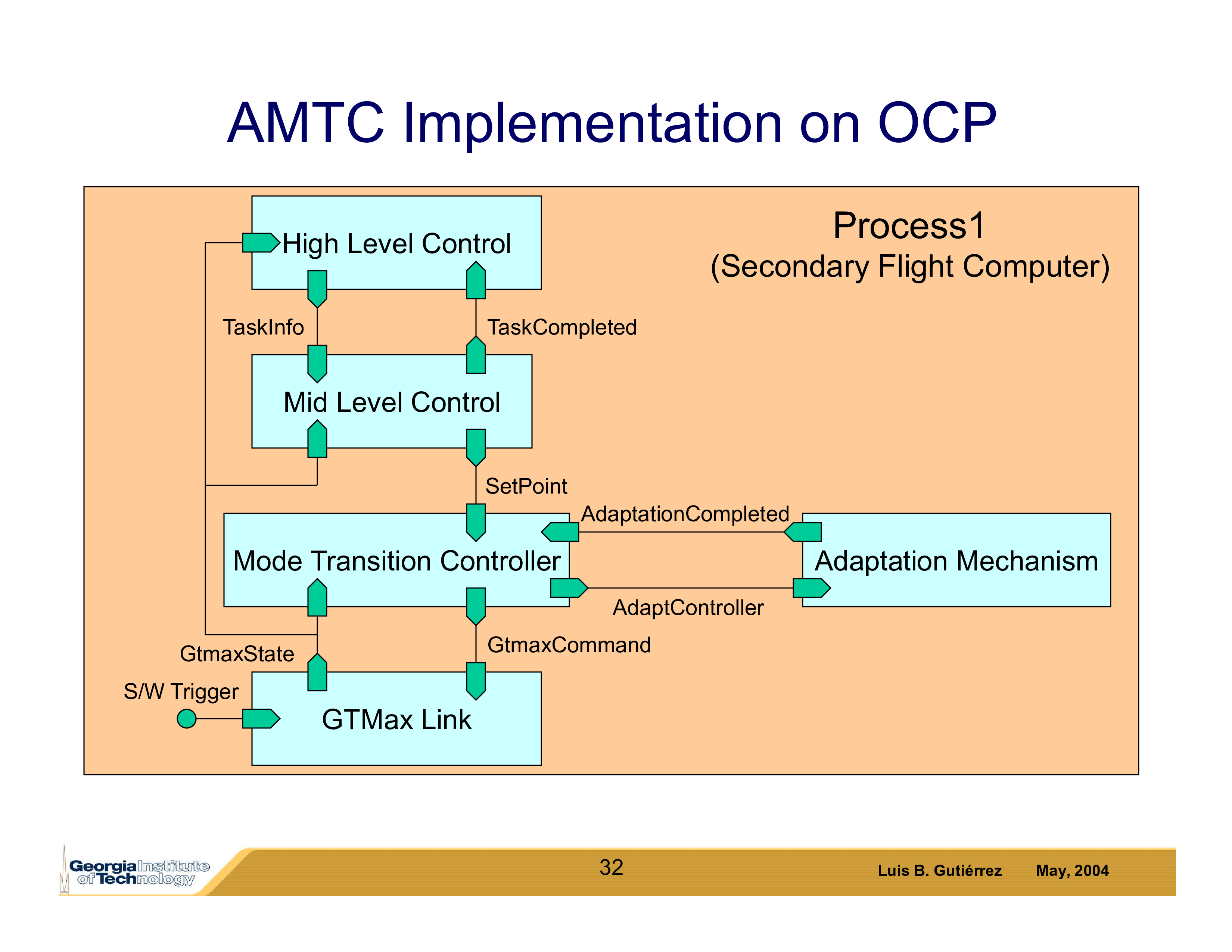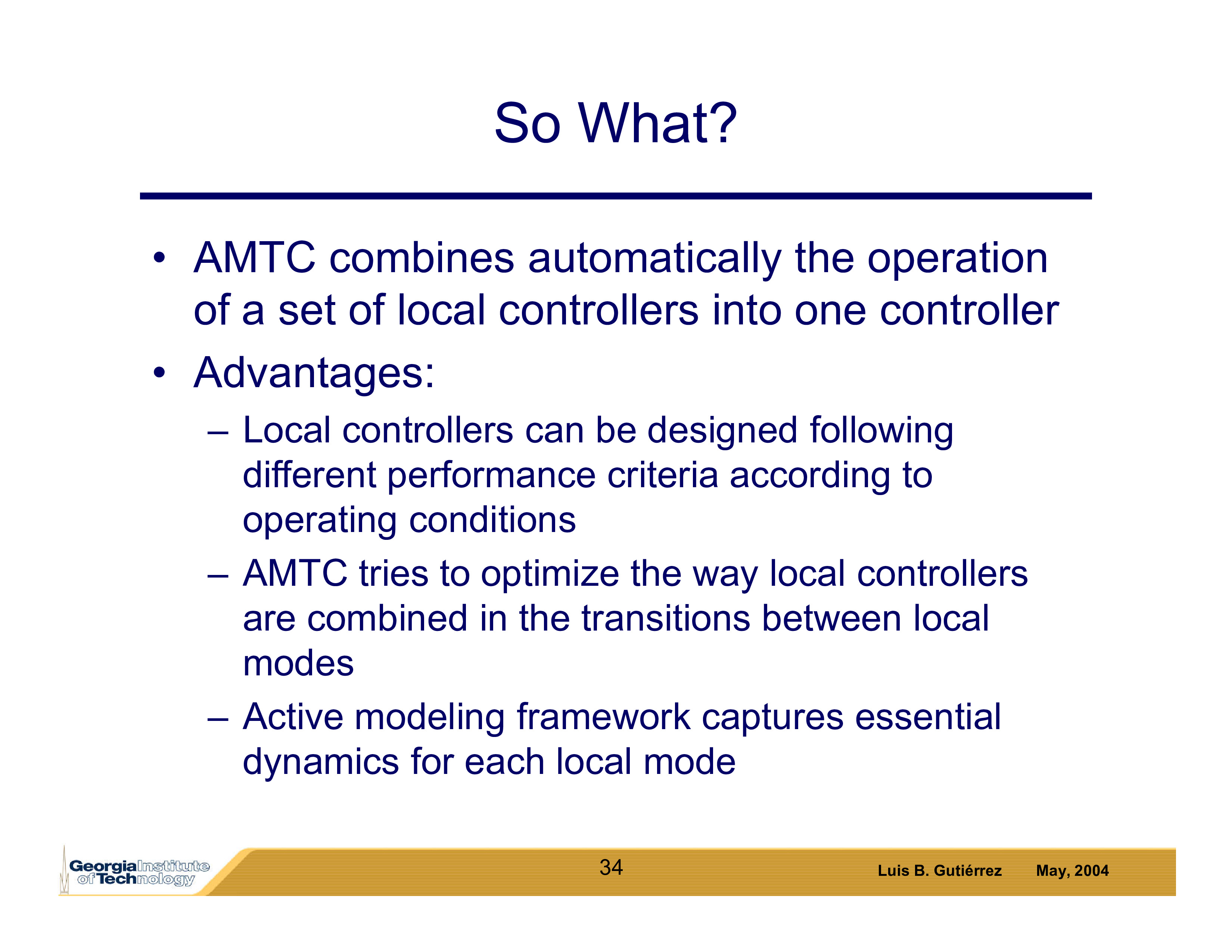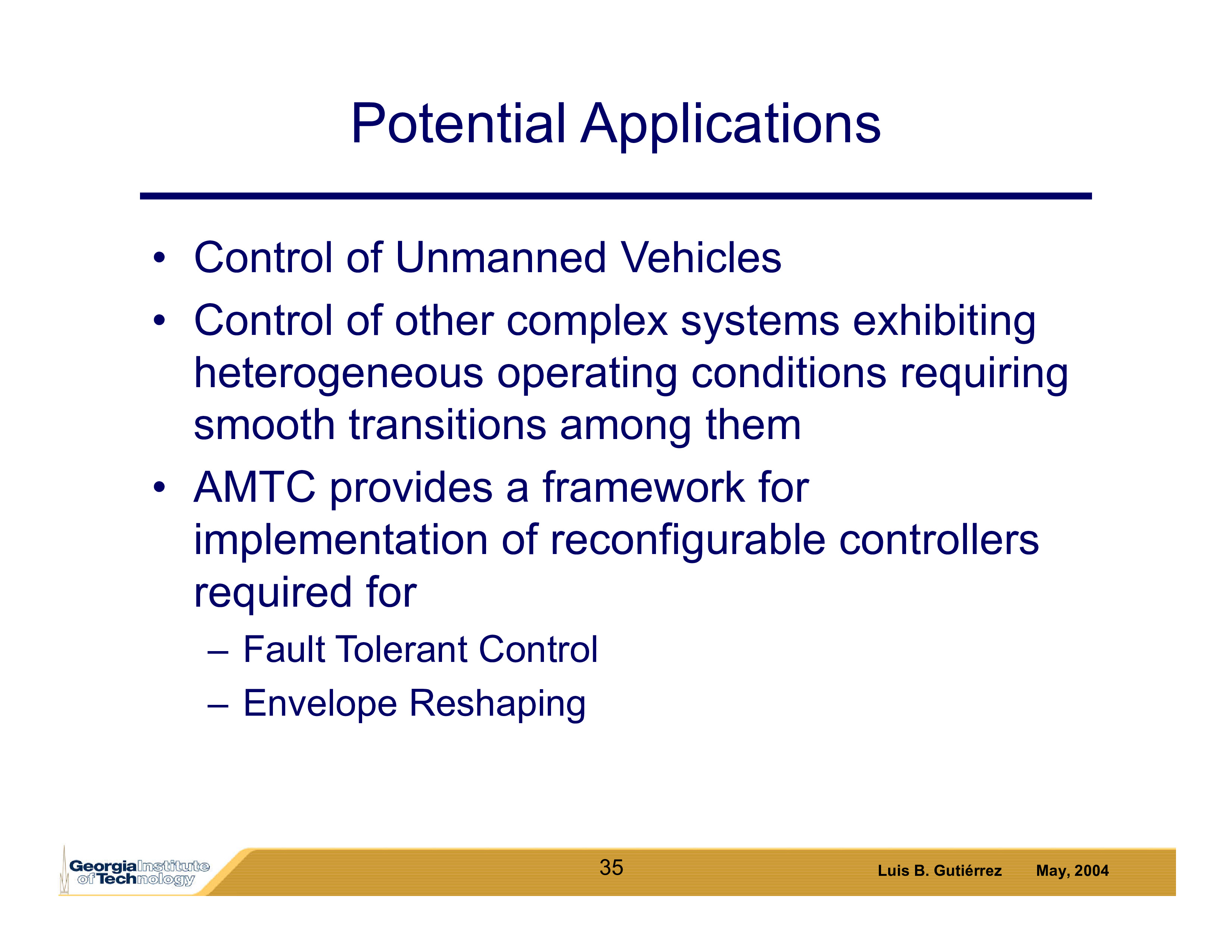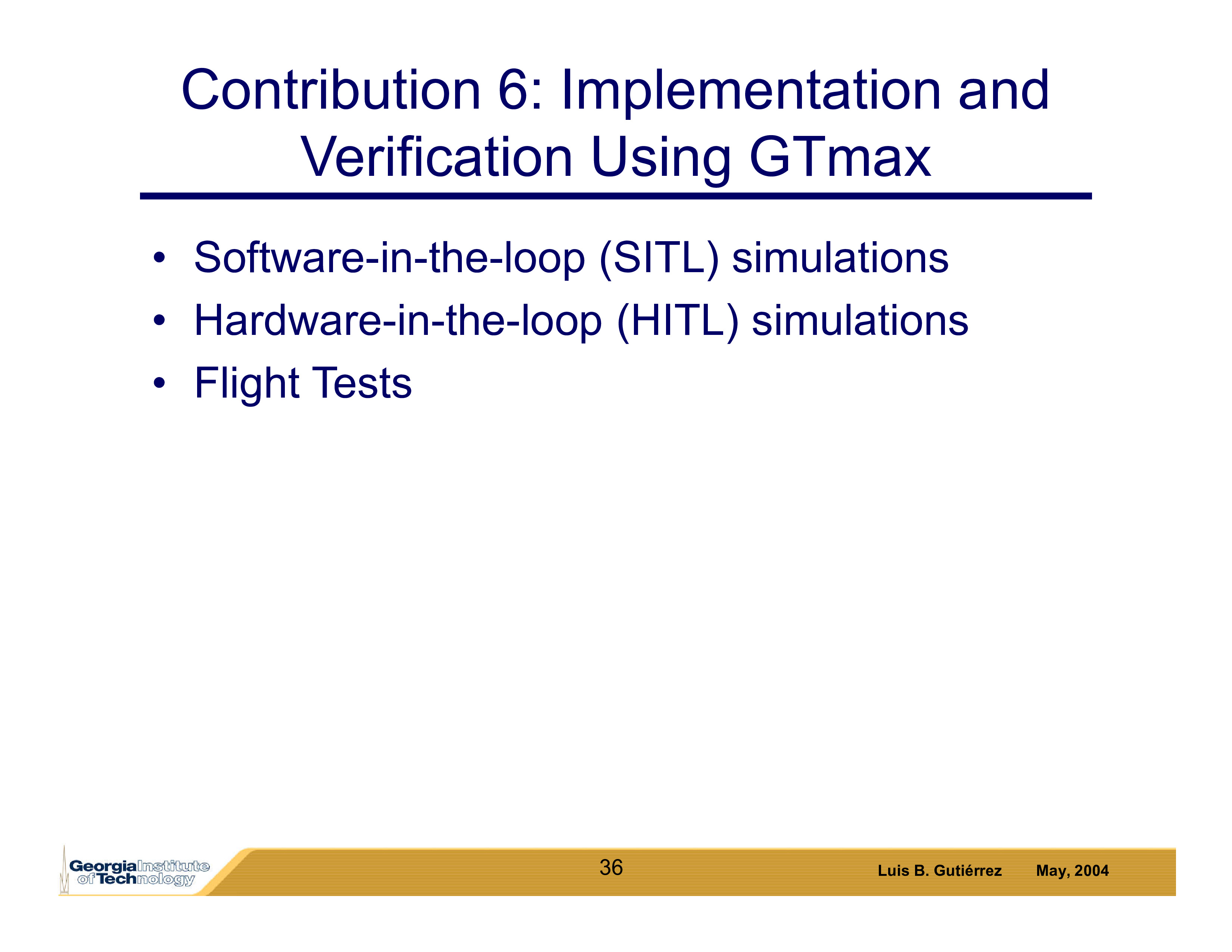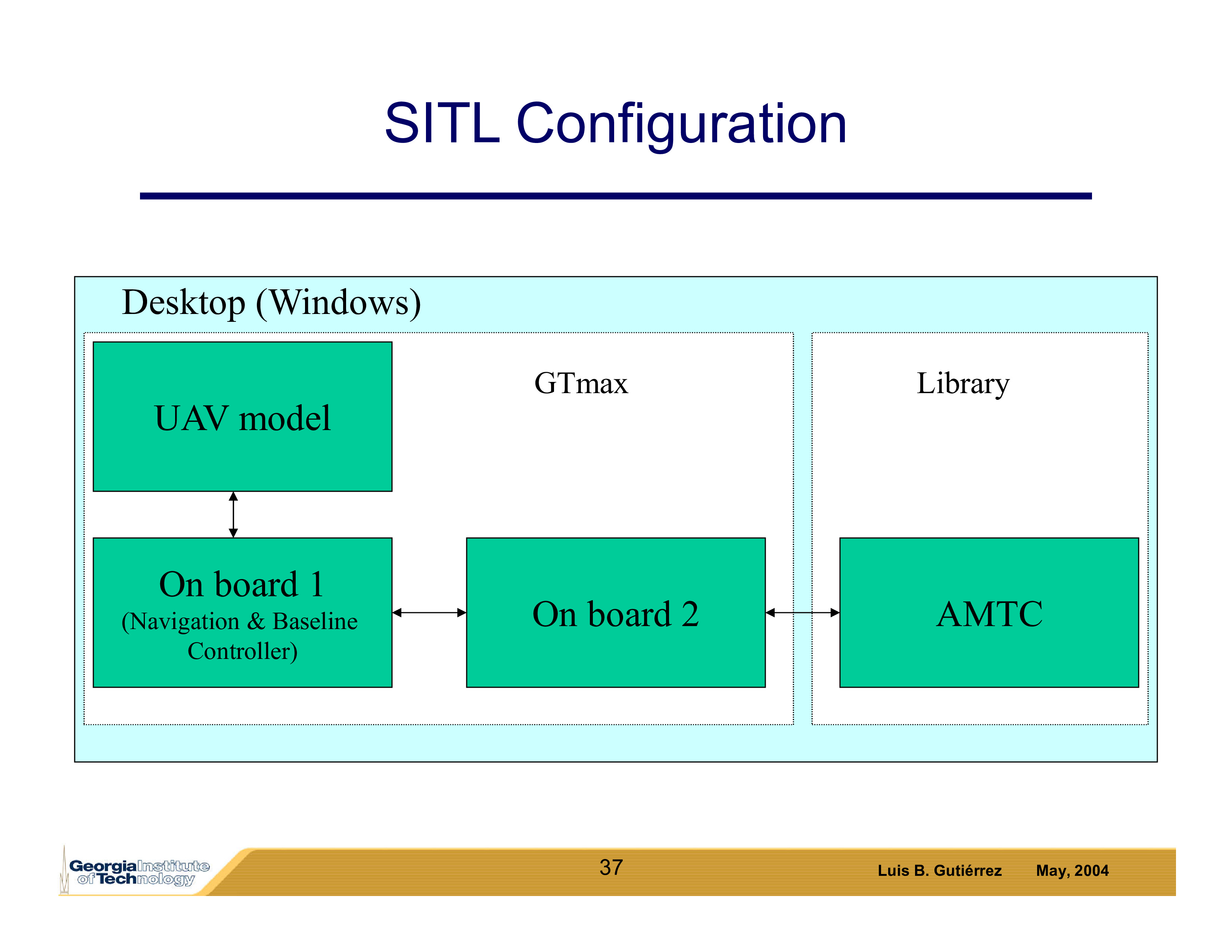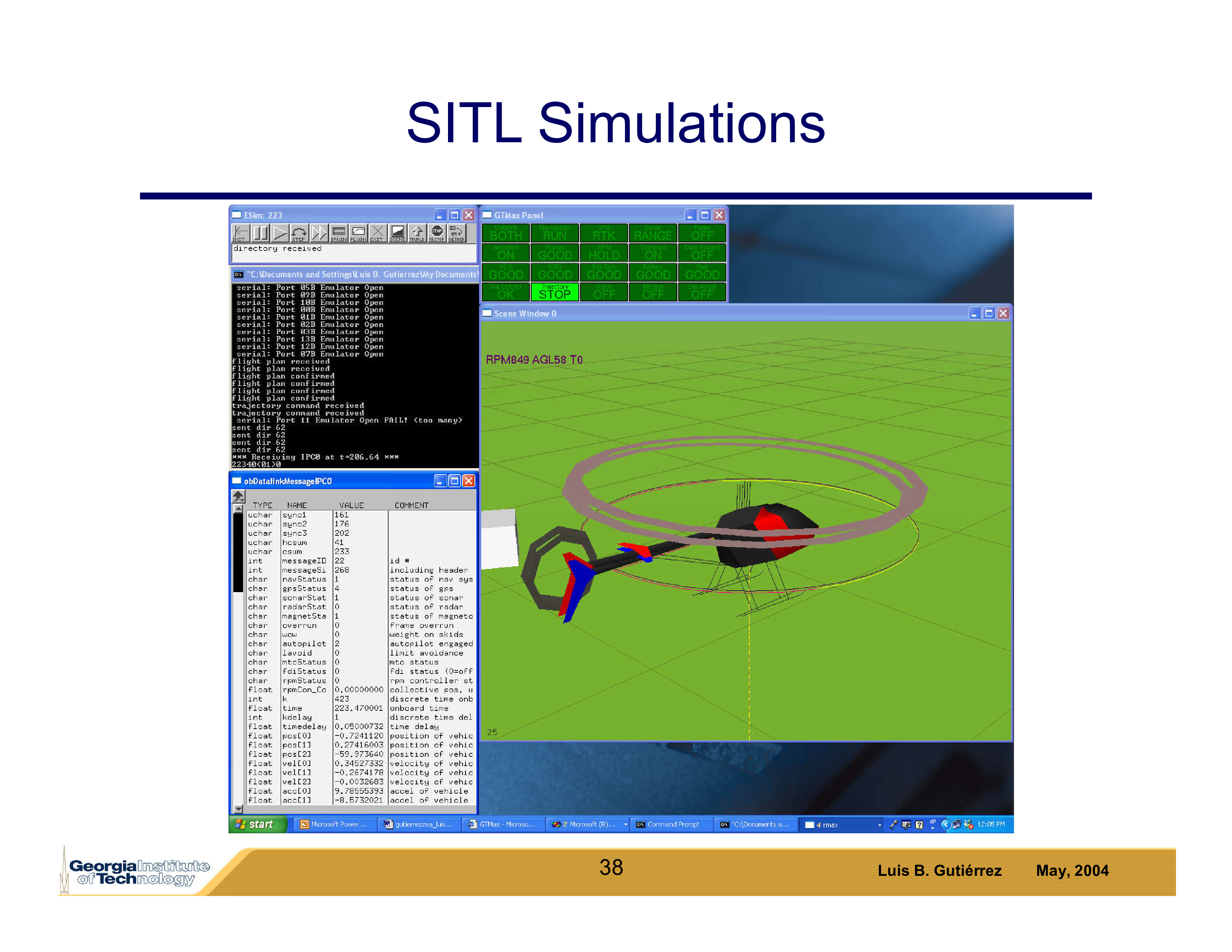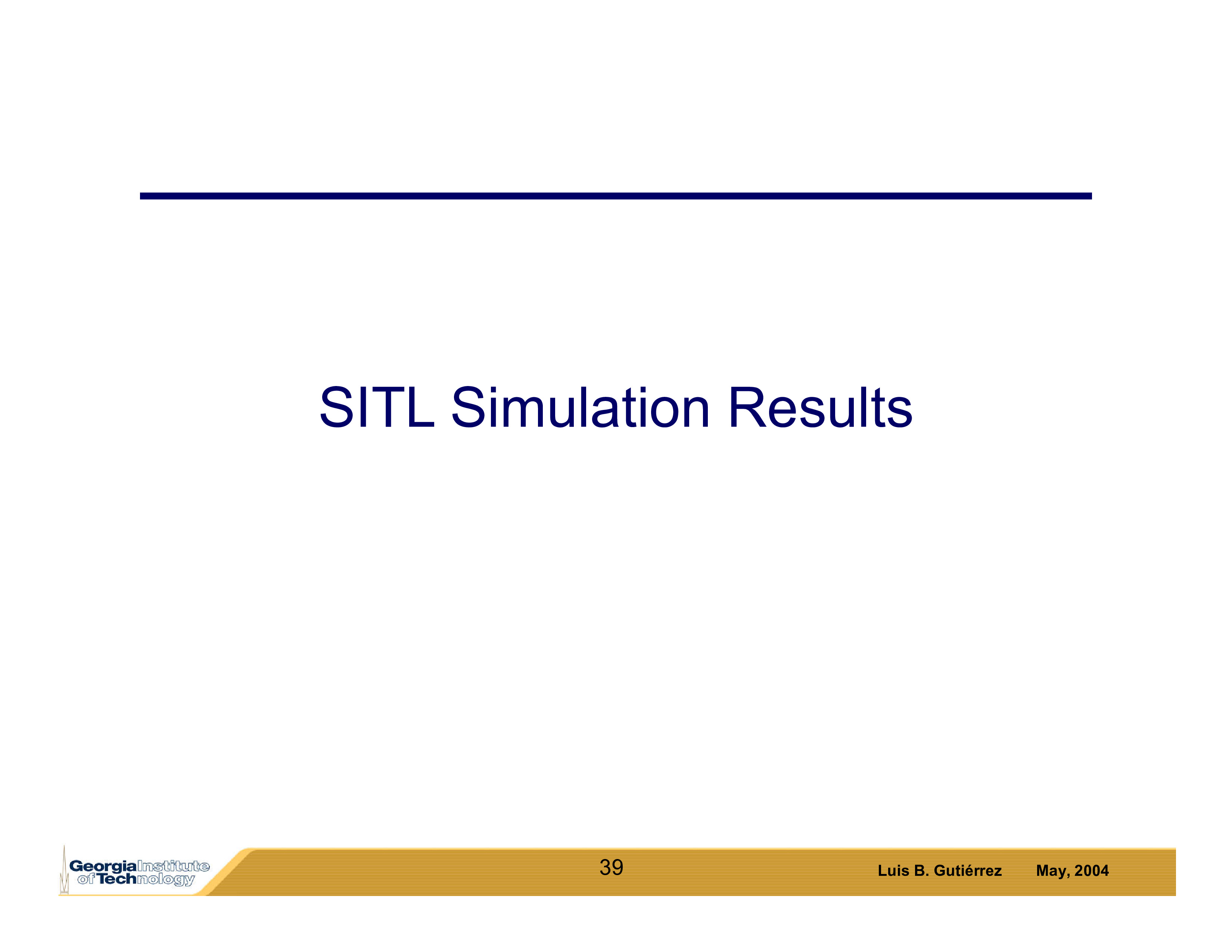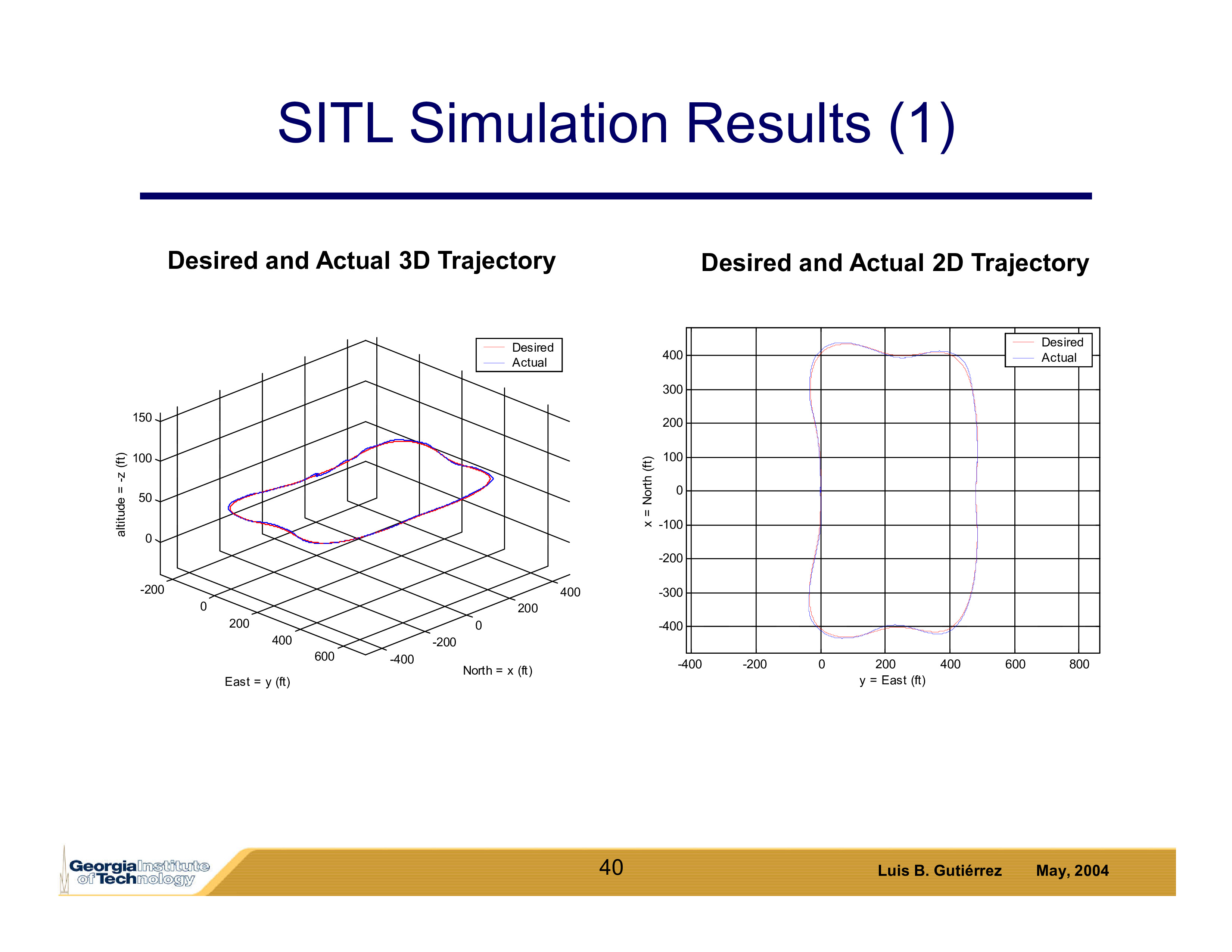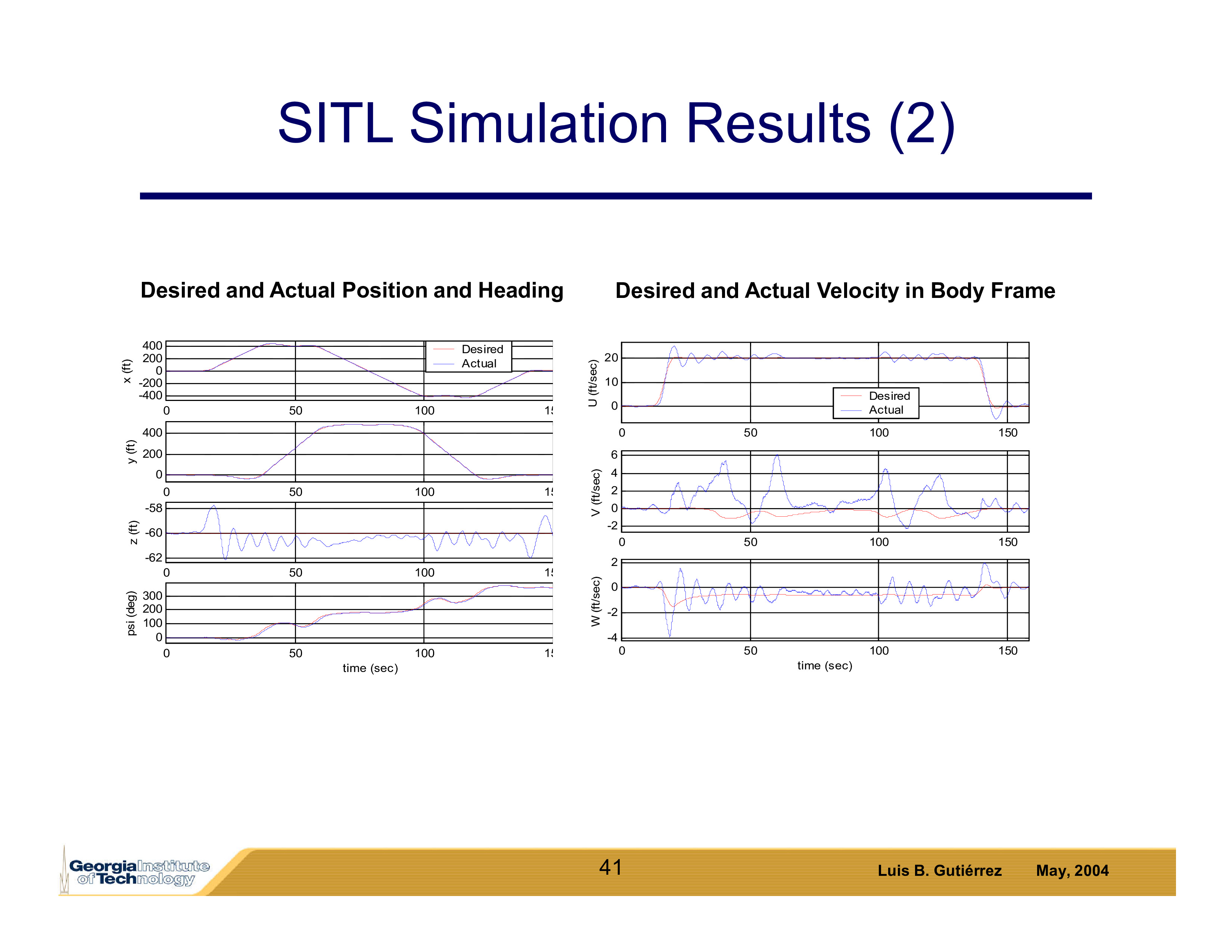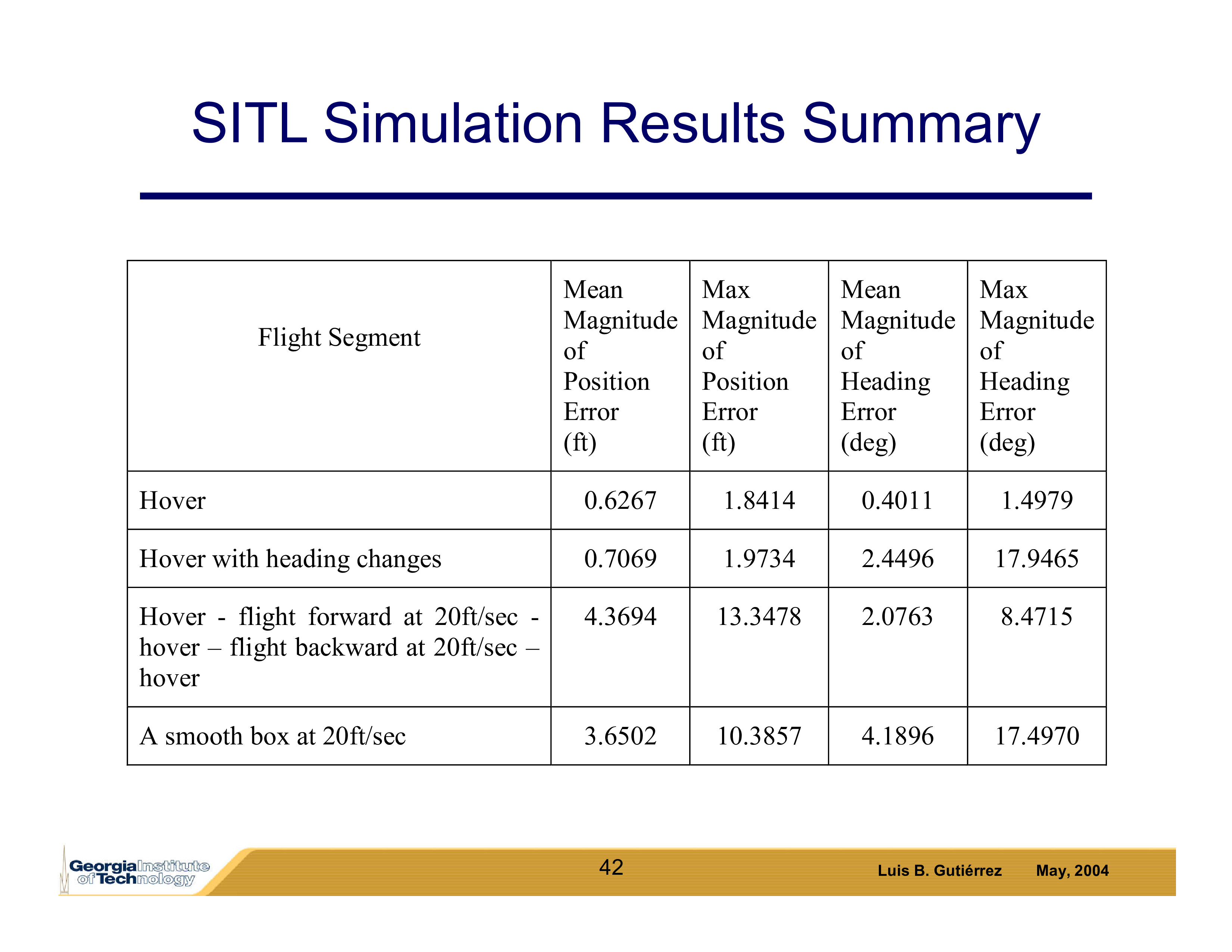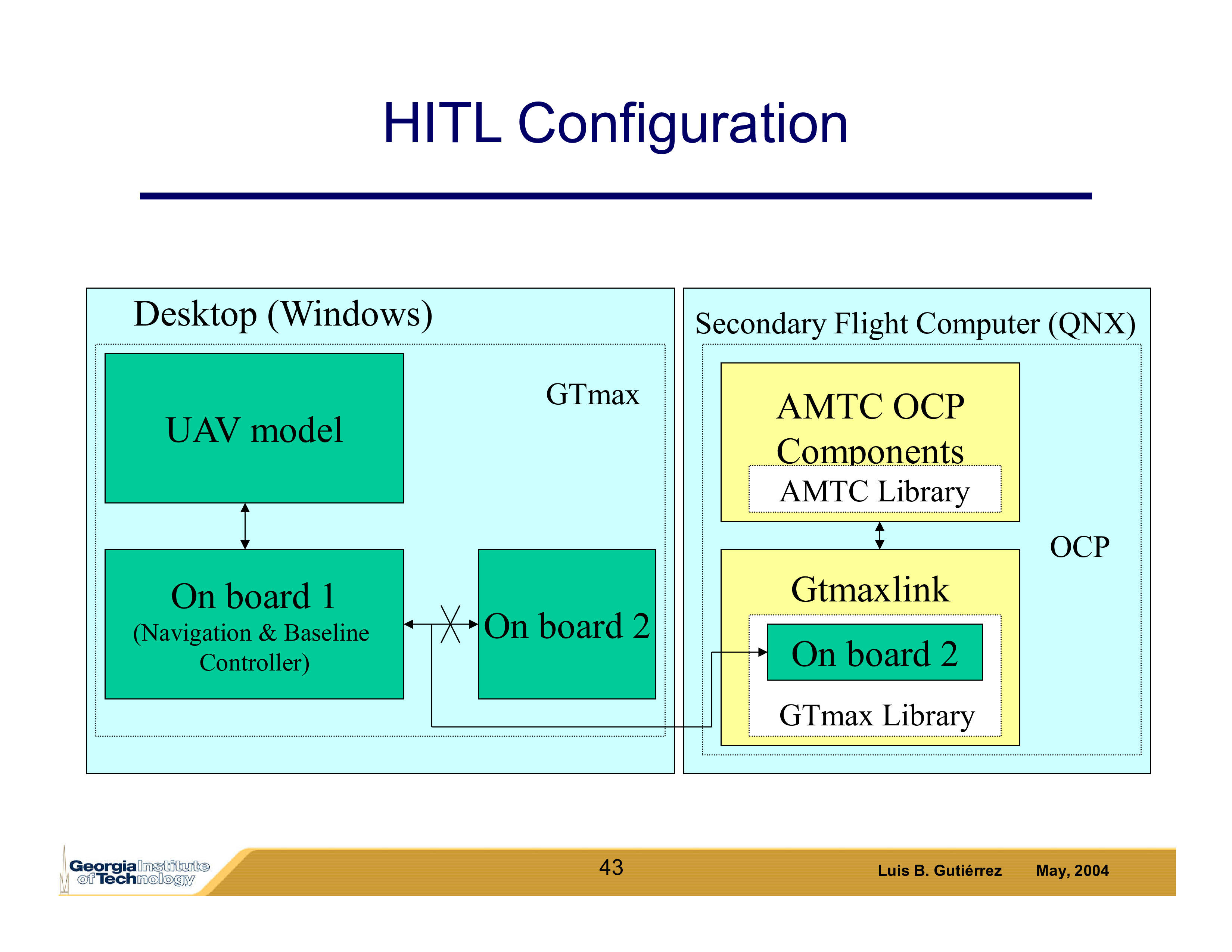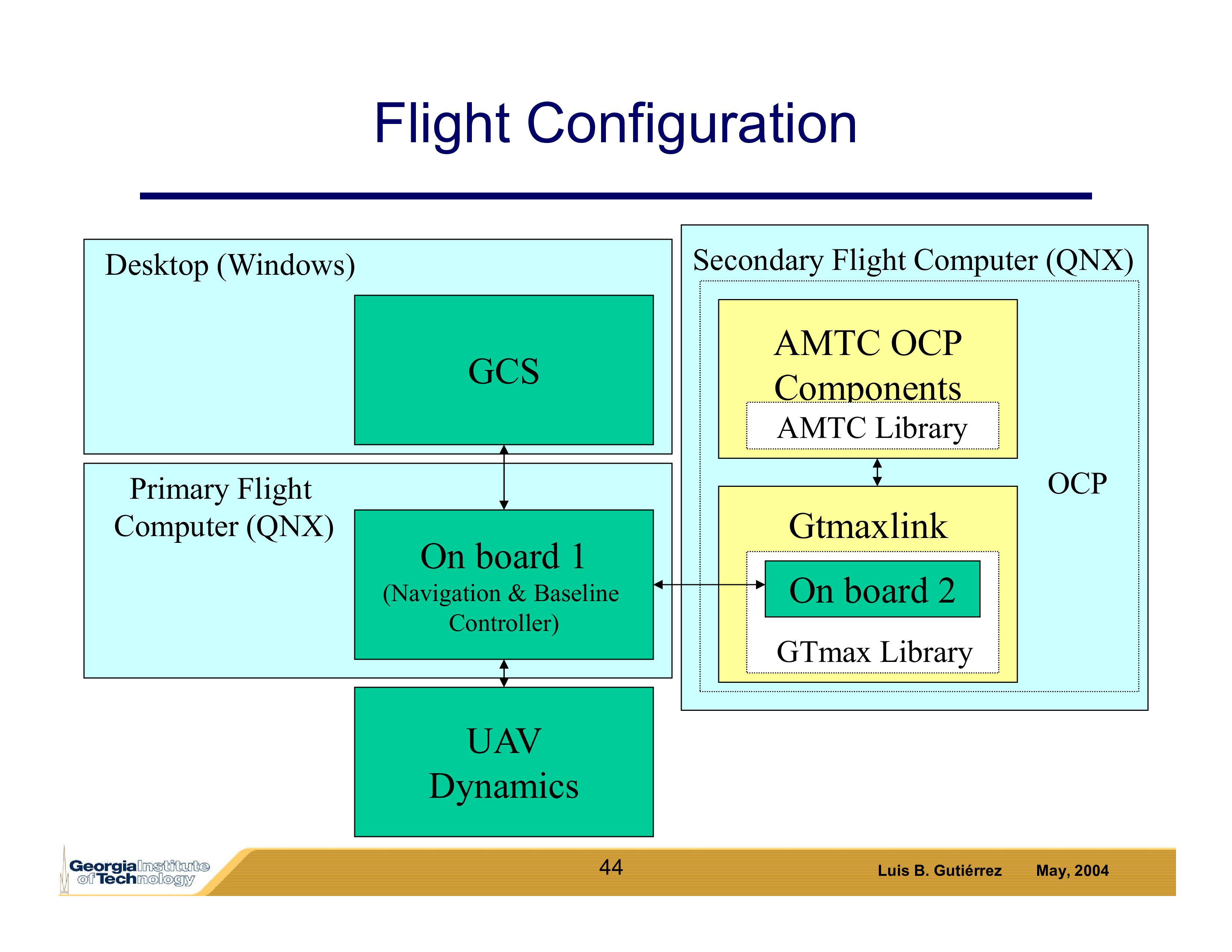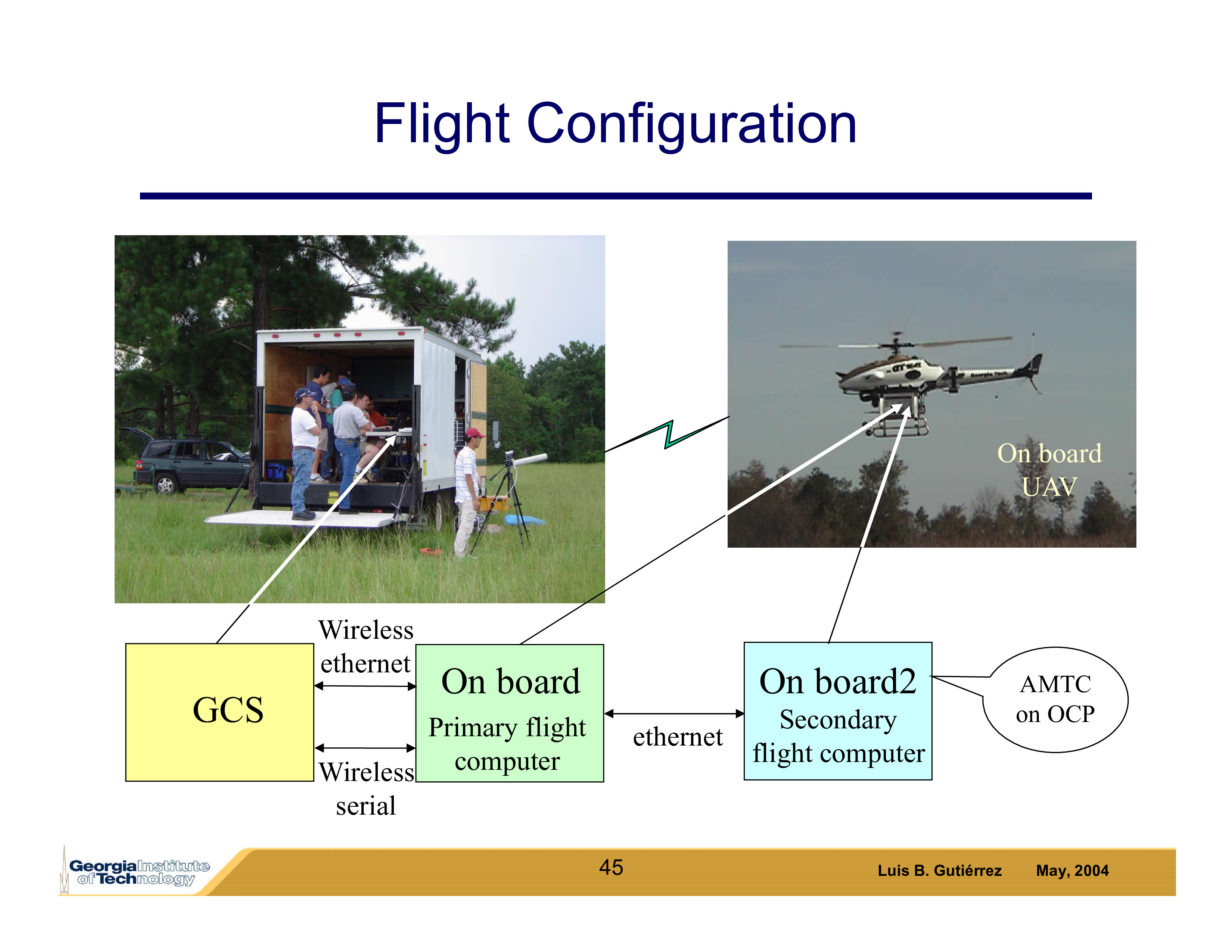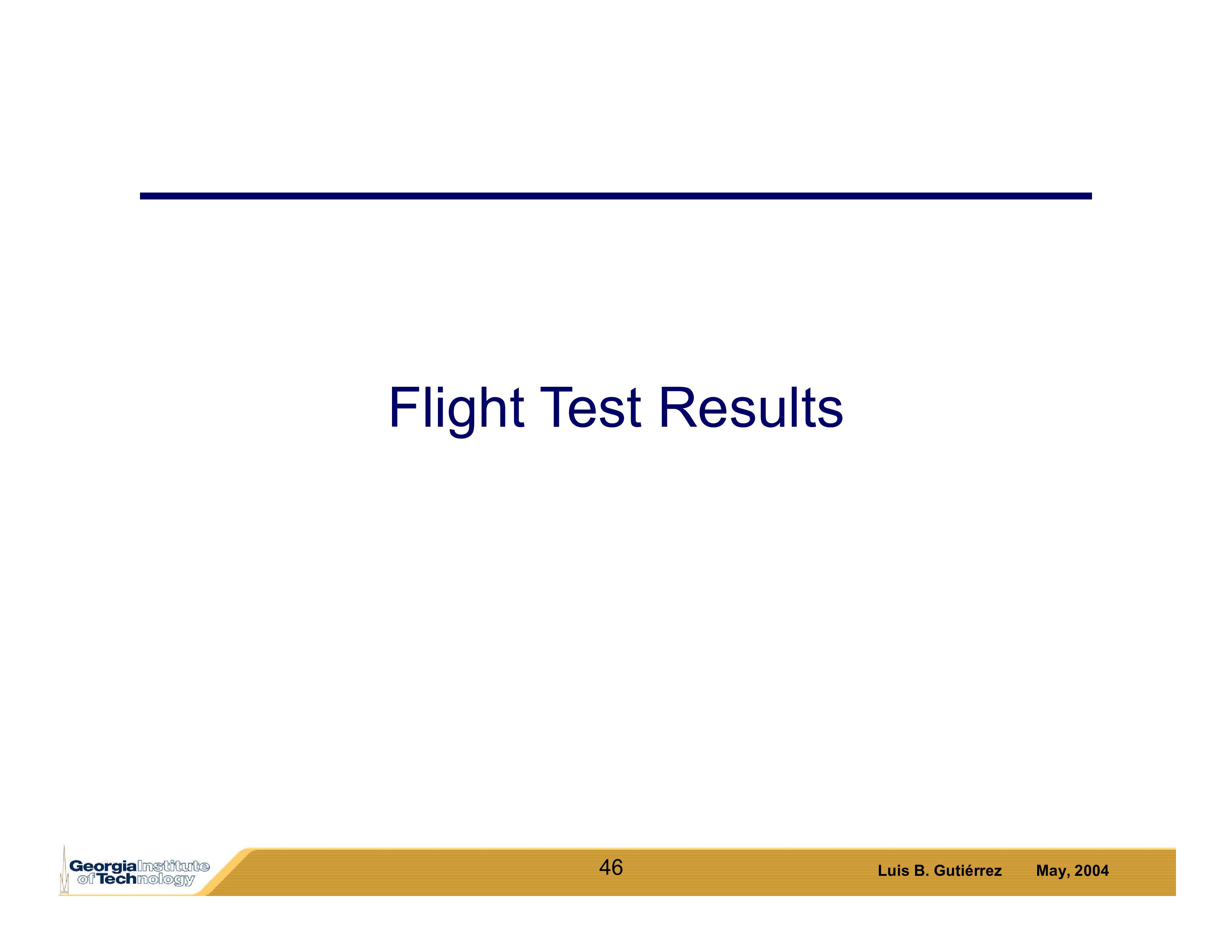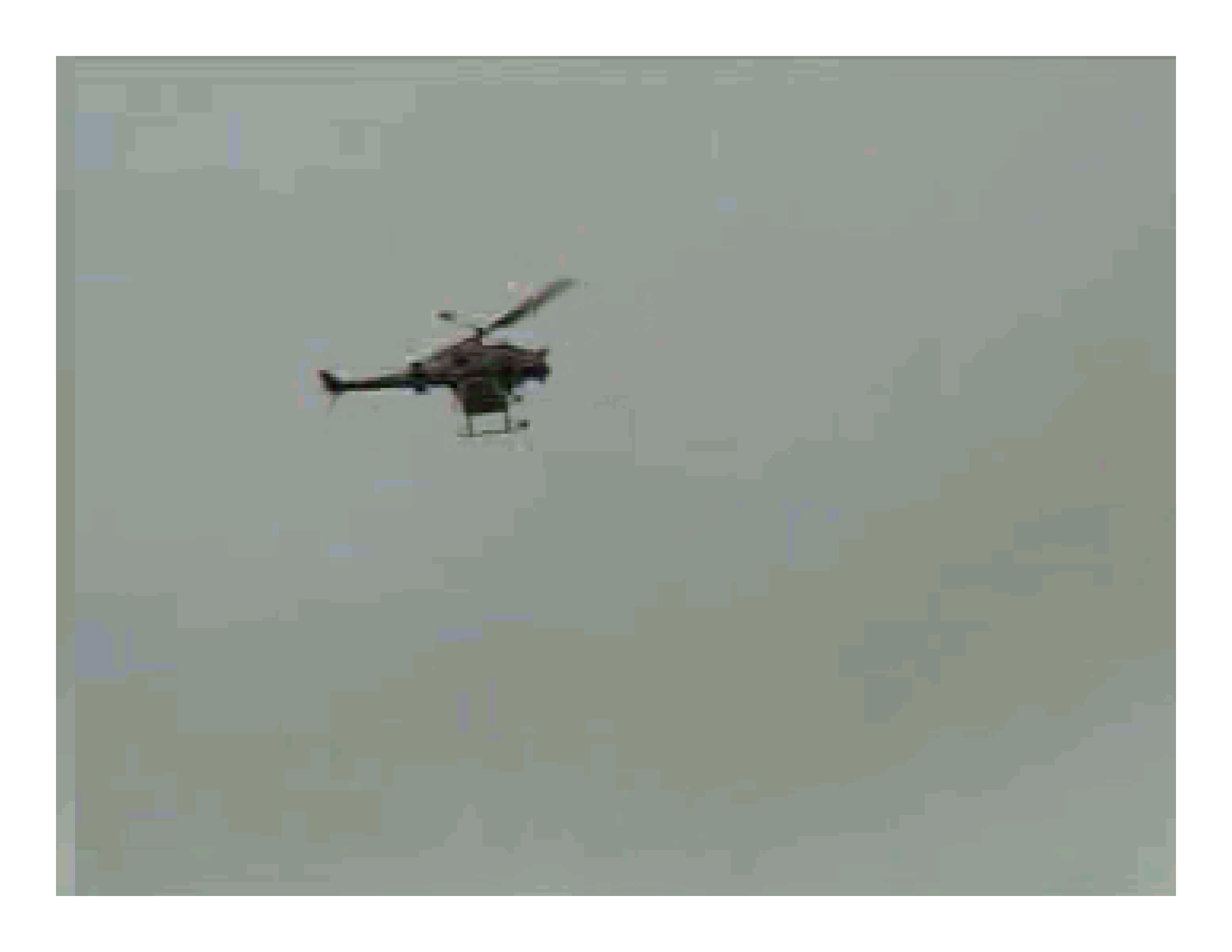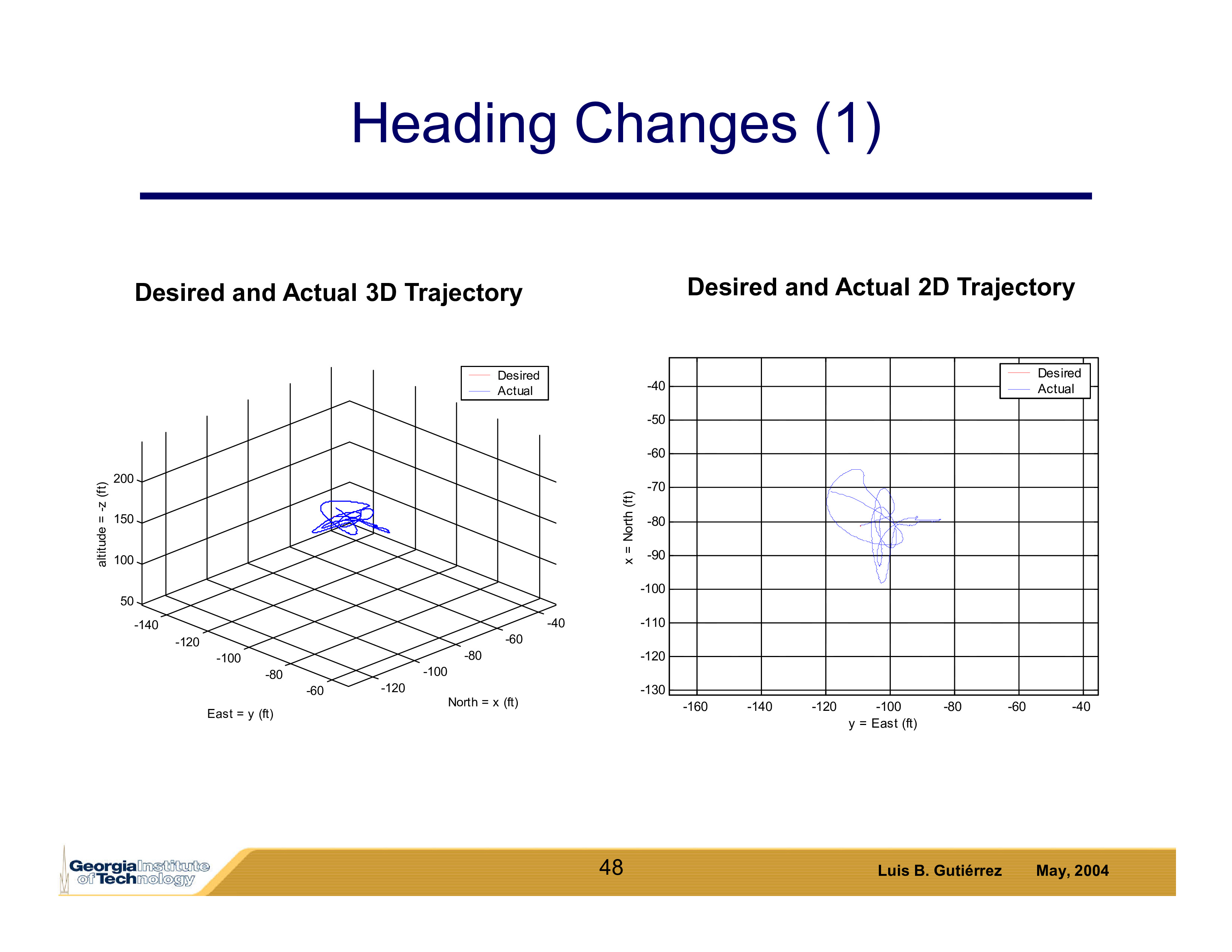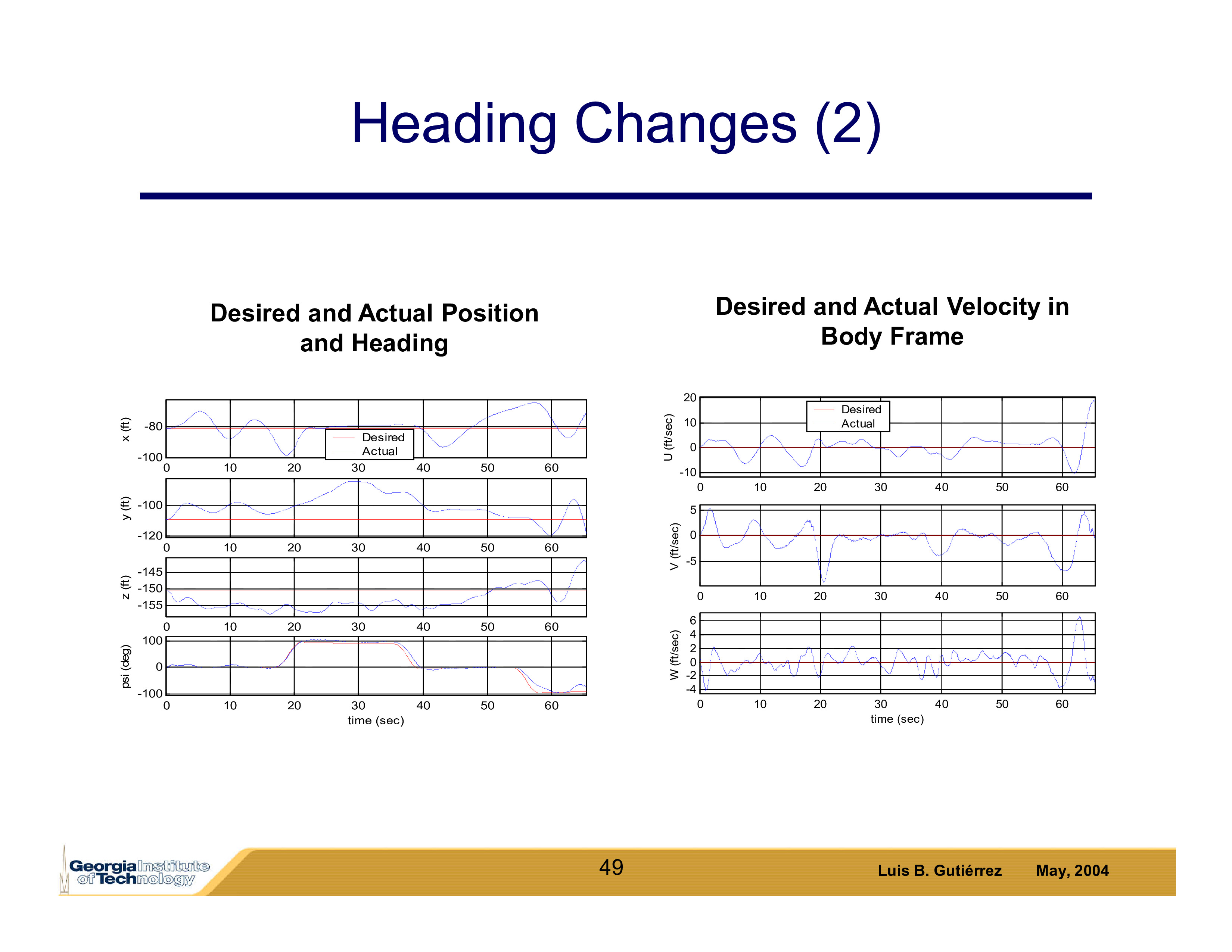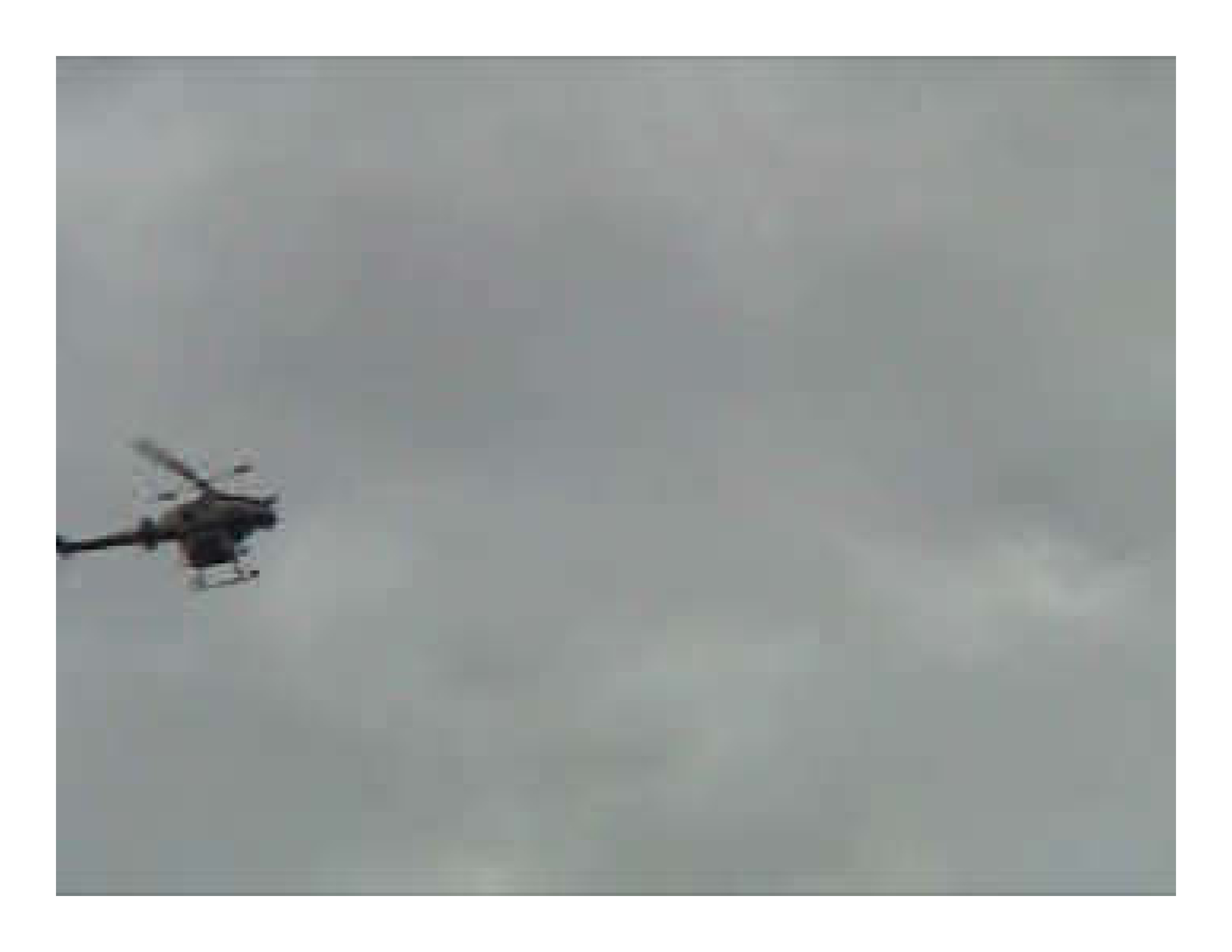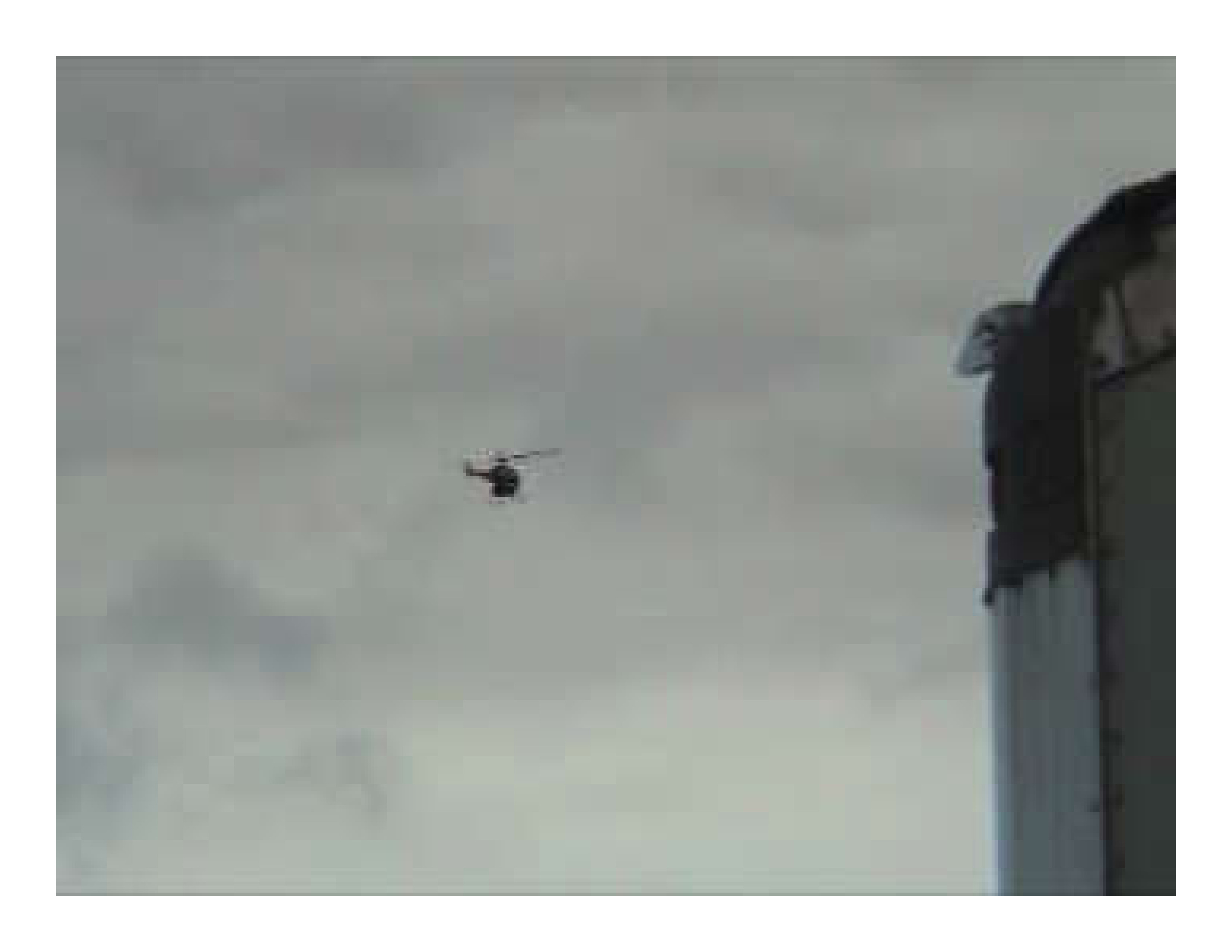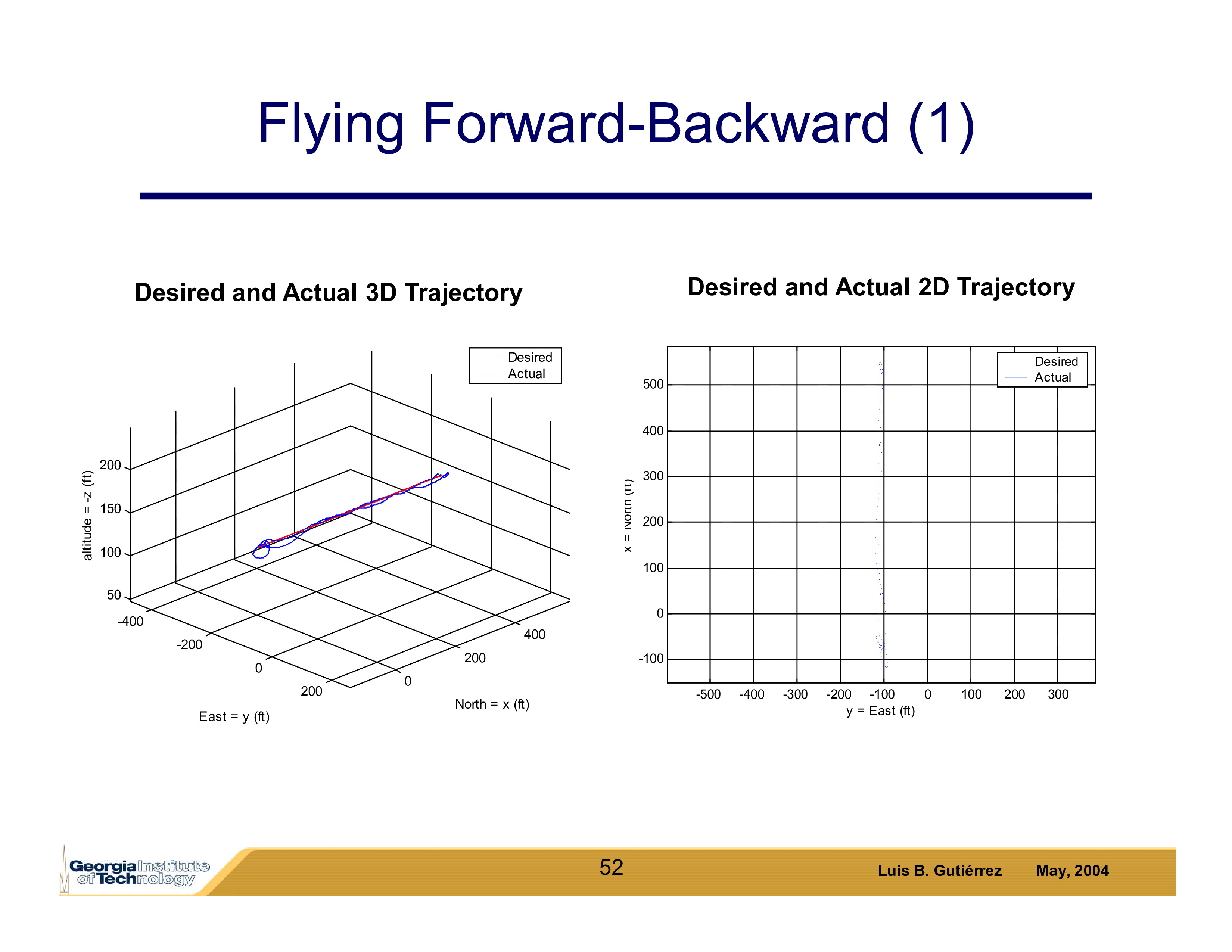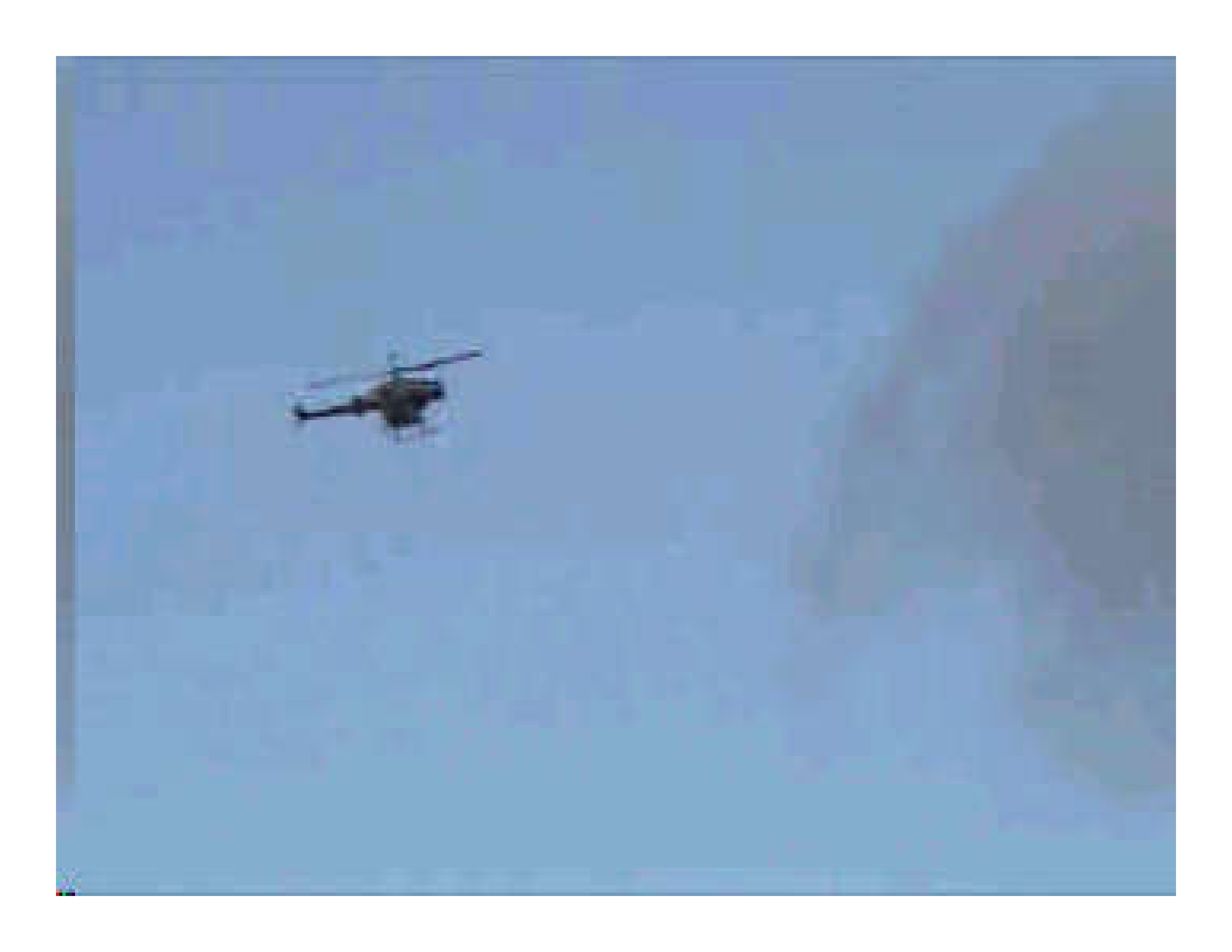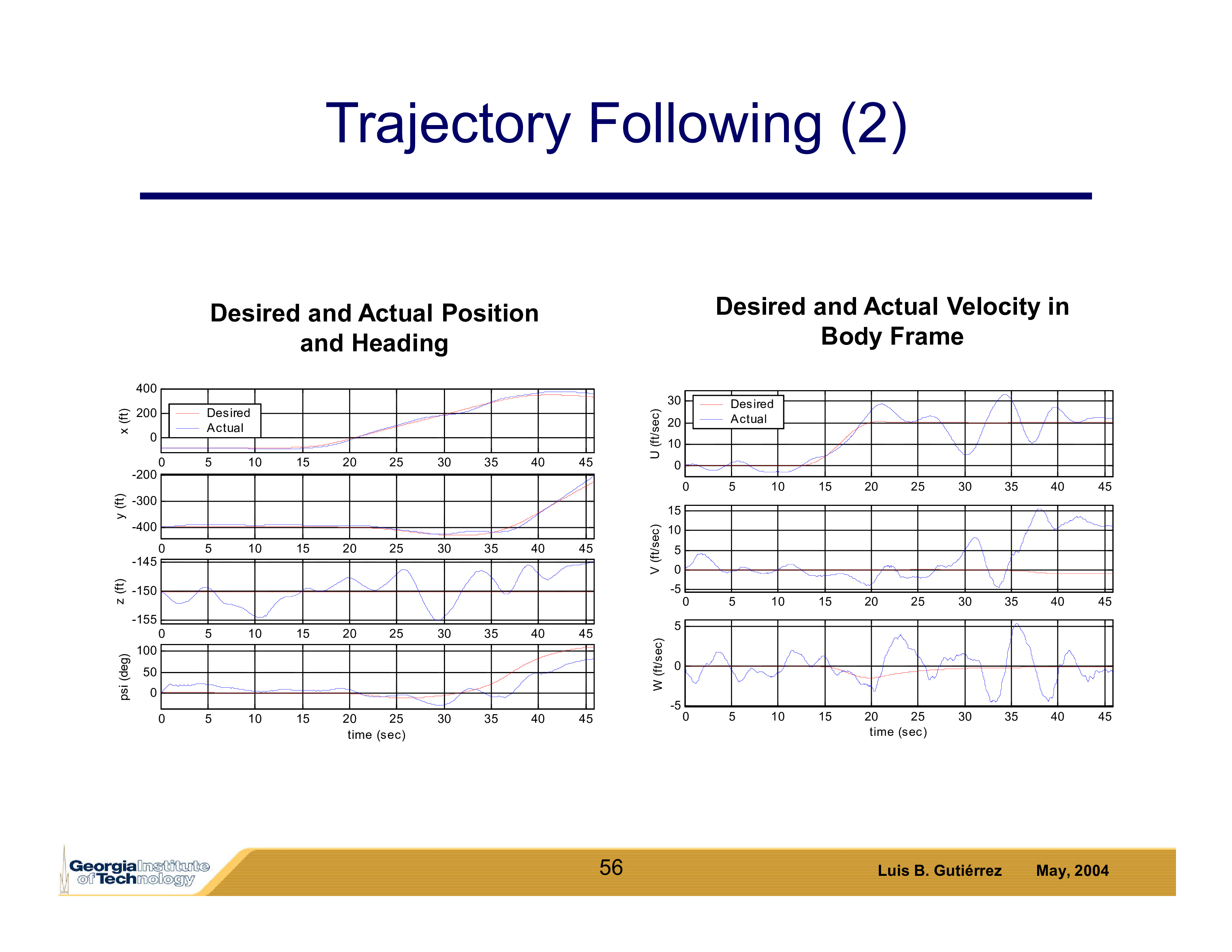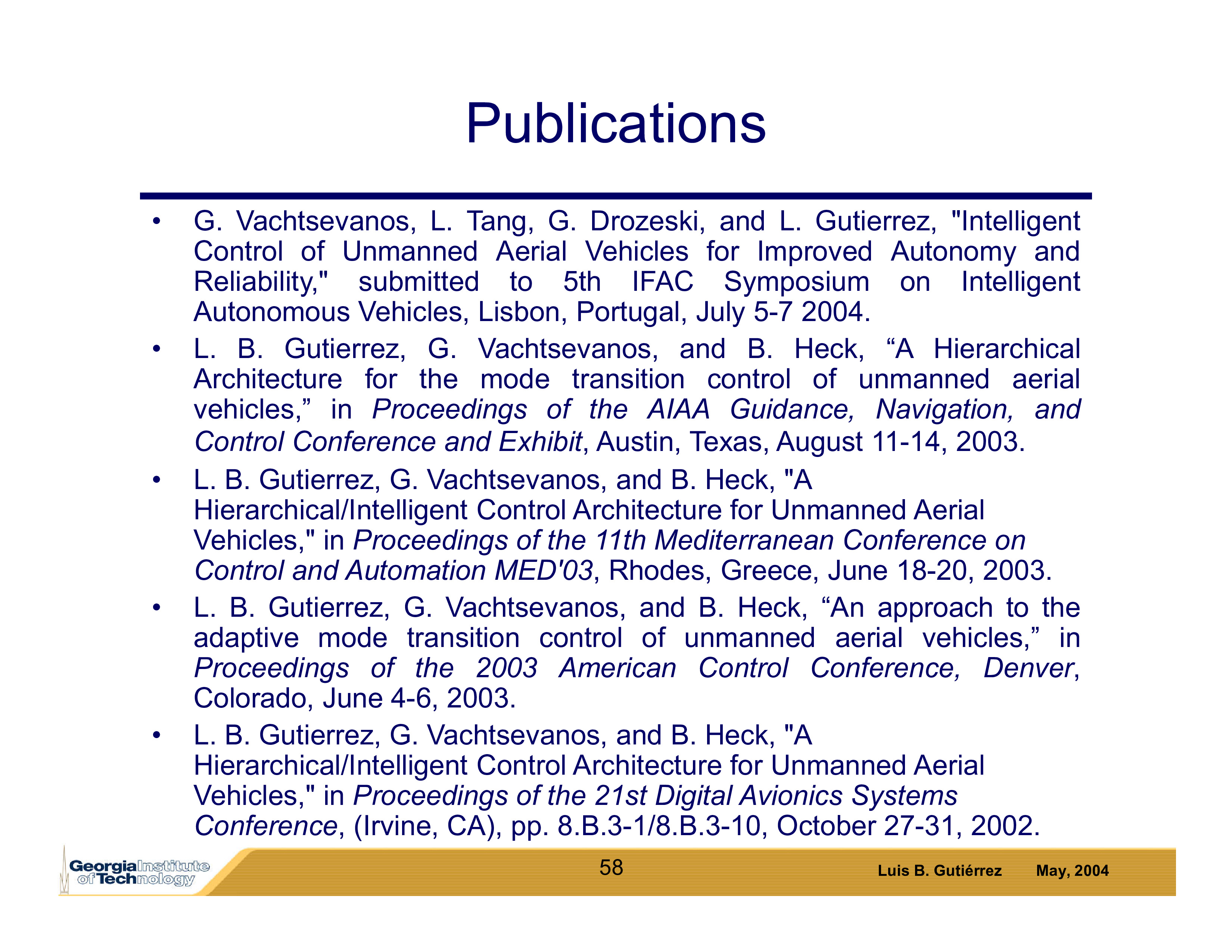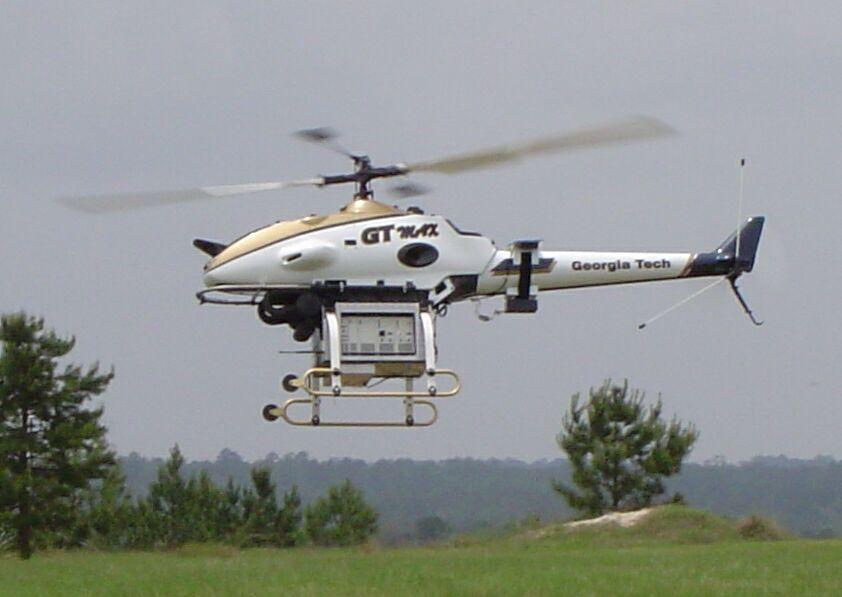
Summary
A new approach to the adaptive mode transition control of unmanned aerial vehicles was proposed. The proposed architecture consists of three levels: the highest level is occupied by mission planning routines where information about way points the vehicle must follow is processed, The mid-level controller uses a trajectory-planning component to coordinate the task execution and provides set points for low-level stabilizing controllers. The adaptive mode transitioning control algorithm resides at the lowest level of the hierarchy consisting of a mode transitioning controller and the accompanying adaptation mechanism. A flight demonstration was done as part of a DARPA sponsored research program to validate the control algorithms using the GTmax, the Georgia Tech UAV testbed.
Adaptive Mode Transition Control
Unmanned Aerial Vehicles (UAVs) are required to possess levels of autonomy in order to execute complex missions robustly and reliably. Intelligent/hierarchical control techniques have been suggested as a means to address critical autonomy issues. The objective of this research is to develop a hierarchical/intelligent control architecture for an UAV. The architecture consists of three levels: high level, middle level, and low level. Mission planning routines occupy the highest level. At this level, information about waypoints that the vehicle must follow is used to generate the sequence of actions that should be performed to go through those waypoints while maintaining some physical constraints. These actions are split into a sequence of tasks; each of them containing target position, target speed, target heading, heading mode, and target direction of the flight path. The tasks are then stored in a task queue and sent in an orderly manner to the middle level. The middle-level controller coordinates task execution while a trajectory generation component receives the task information from the high-level module and provides set points for low-level stabilizing controllers whose function is to maintain the vehicle in a stable state and follow accurately the commanded trajectory. An adaptive mode transitioning control algorithm resides at the lowest level of the hierarchy consisting of two components: a mode transitioning controller and the accompanying adaptation mechanism. The mode transition controller is composed of a mode transition manager, a set of local controllers, and a set of active control models. Local controllers operate in local modes and active control models operate in transitions between two local modes. The mode transition manager determines the actual mode of operation of the vehicle based on a set of mode membership functions and activates a local controller or an active control model accordingly. The adaptation mechanism uses an indirect adaptive control methodology to adapt the active control models. For this purpose, a set of plant models is trained based on input/output information from the vehicle and used to compute the linearized models required by the adaptation algorithms. The core of the adaptation mechanism is a finite horizon optimal control algorithm, which determines the optimal control signal that in turn is used to train the active control models. The adaptation routine may be turned on only when needed. The transitioning algorithm operates in real-time while adapting on-line to disturbances and other external inputs. This intelligent/hierarchical architecture has been implemented using a novel software infrastructure called Open Control Platform (OCP), which facilitates interoperability, plug-and-play and other functionalities. Simulation and flight test results validate the proposed scheme.
The main contributions of this research are:
- Development of a hierarchical architecture for the implementation of the adaptive mode transition control, flexible enough to be able to accommodate future enhancements and more intelligent at the highest level of the hierarchy.
- Development of a new approach to the adaptive mode transition control problem addressing main concerns from previous accomplishments in this area.
- Exploitation of new software technologies including the OCP and hybrid controls API to show how they enable the implementation of advanced control algorithms for UAVs.
Presentation
Related Publications
[1] G. Vachtsevanos, L. Tang, G. Drozeski, and L. Gutiérrez, “From mission planning to flight control of unmanned aerial vehicles: Strategies and implementation tools,” Annual Reviews in Control, vol. 29, no. 1, pp. 101–115, 2005. Available: https://www.sciencedirect.com/science/article/pii/S136757880500009X, ISSN: 1367-5788, doi: https://doi.org/10.1016/j.arcontrol.2004.11.002. pdf
[2] G. Vachtsevanos, L. Tang, G. Drozeski, and L. Gutiérrez, “Intelligent control of unmanned aerial vehicles for improved autonomy and reliability,” in IFAC/EURON Symposium on Intelligent Autonomous Vehicles, (Lisbon, Portugal), pp. 852–861, International Federation of Automatic Control, IFAC, July 5-7, 2004. Available: https://www.sciencedirect.com/science/article/pii/S1474667017320876, ISSN: 1474-6670, doi: https://doi.org/10.1016/S1474-6670(17)32087-6. pdf
[3] L. B. Gutiérrez, G. Vachtsevanos, and B. Heck, “A hierarchical architecture for the adaptive mode transition control of unmanned aerial vehicles,” in Proc. AIAA Guidance, Navigation, and Control Conference and Exhibit, (Austin, Texas, USA), American Institute of Aeronautics and Astronautics, AIAA, August 11-14, 2003. Available: https://arc.aiaa.org/doi/10.2514/6.2003-5740, eISBN: 978-1-62410-090-1, doi: https://doi.org/10.2514/6.2003-5740. pdf
[4] L. B. Gutiérrez, “Vehículos aéreos autónomos,” in Memorias del V Congreso de la Asociación Colombiana de Automática, (Medellı́n, Colombia), Asociación Colombiana de Automática, ACA, Julio 17-19, 2003. ISBN: 9588173515. Presentation
[5] L. B. Gutiérrez, G. Vachtsevanos, and B. Heck, “A hierarchical/intelligent control architecture for unmanned aerial vehicles,” in Proc. of the 11th Mediterranean Conference on Control and Automation MED’03, (Rhodes, Greece), Mediterranean Control Association, June 18-20, 2003. Available: http://med-control.org/medproceedings/MED11-2003.zip. pdf
[6] L. B. Gutiérrez, G. Vachtsevanos, and B. Heck, “An approach to the adaptive mode transition control of unmanned aerial vehicles,” in Proc. 2003 American Control Conference, (Denver, Colorado), pp. 3911–3912, IEEE, June 4-6, 2003. Available: https://ieeexplore.ieee.org/document/1240446, ISBN: 0-7803-7896-2, ISSN: 0743-1619, doi: https://doi.org/10.1109/ACC.2003.1240446. pdf
[7] L. B. Gutiérrez, G. Vachtsevanos, and B. Heck, “A hierarchical/intelligent control architecture for unmanned aerial vehicles,” in Proc. of the 21st Digital Avionics Systems Conference, (Irvine, CA, USA), pp. 8.B.3–1/8.B.3–10, IEEE, October 27-31, 2002. ISBN: 0-7803-7896-0 Softbound Edition / 0-7803-7896-0 CD-ROM Edition, ISSN: 0743-1619. pdf
